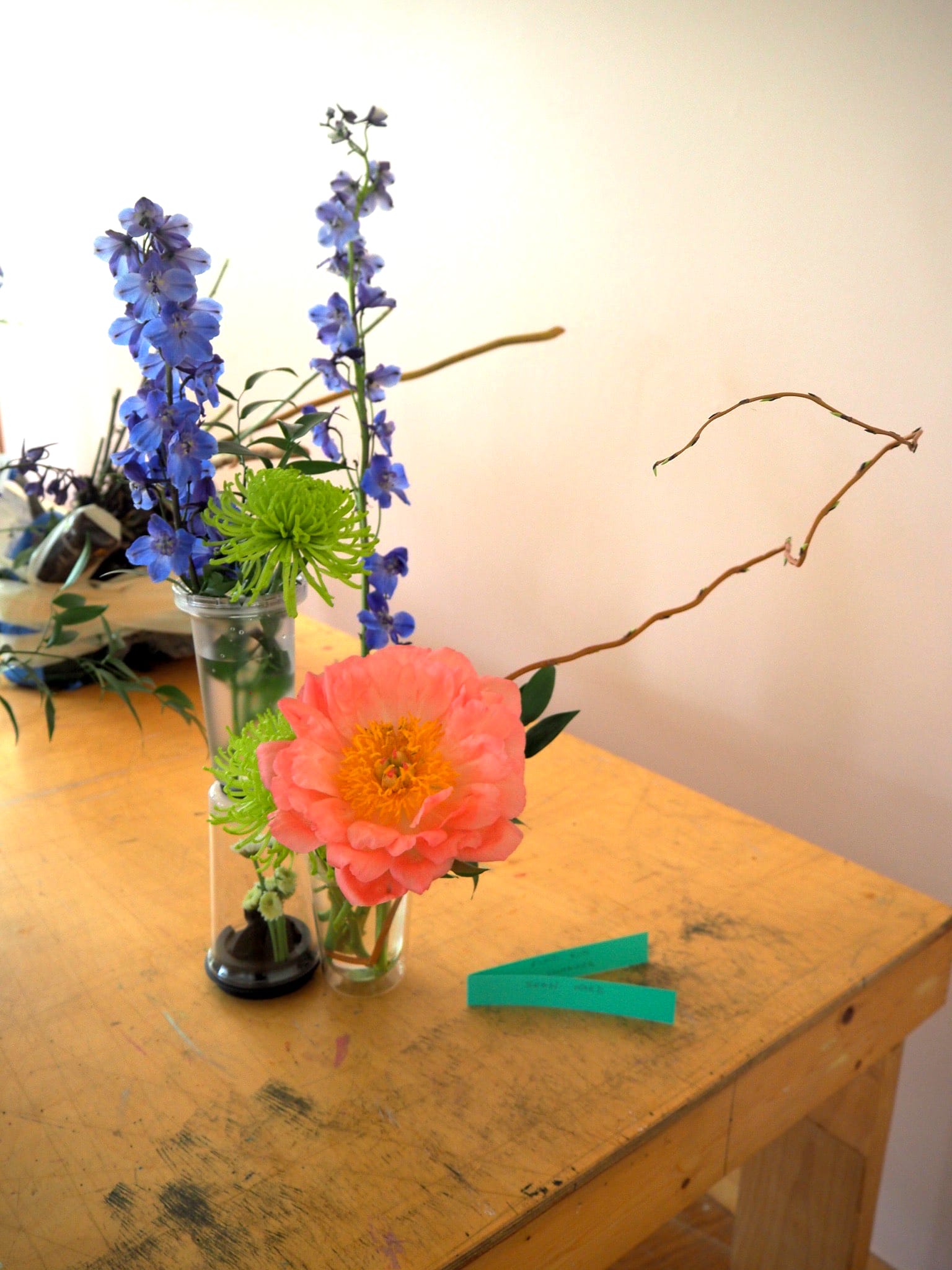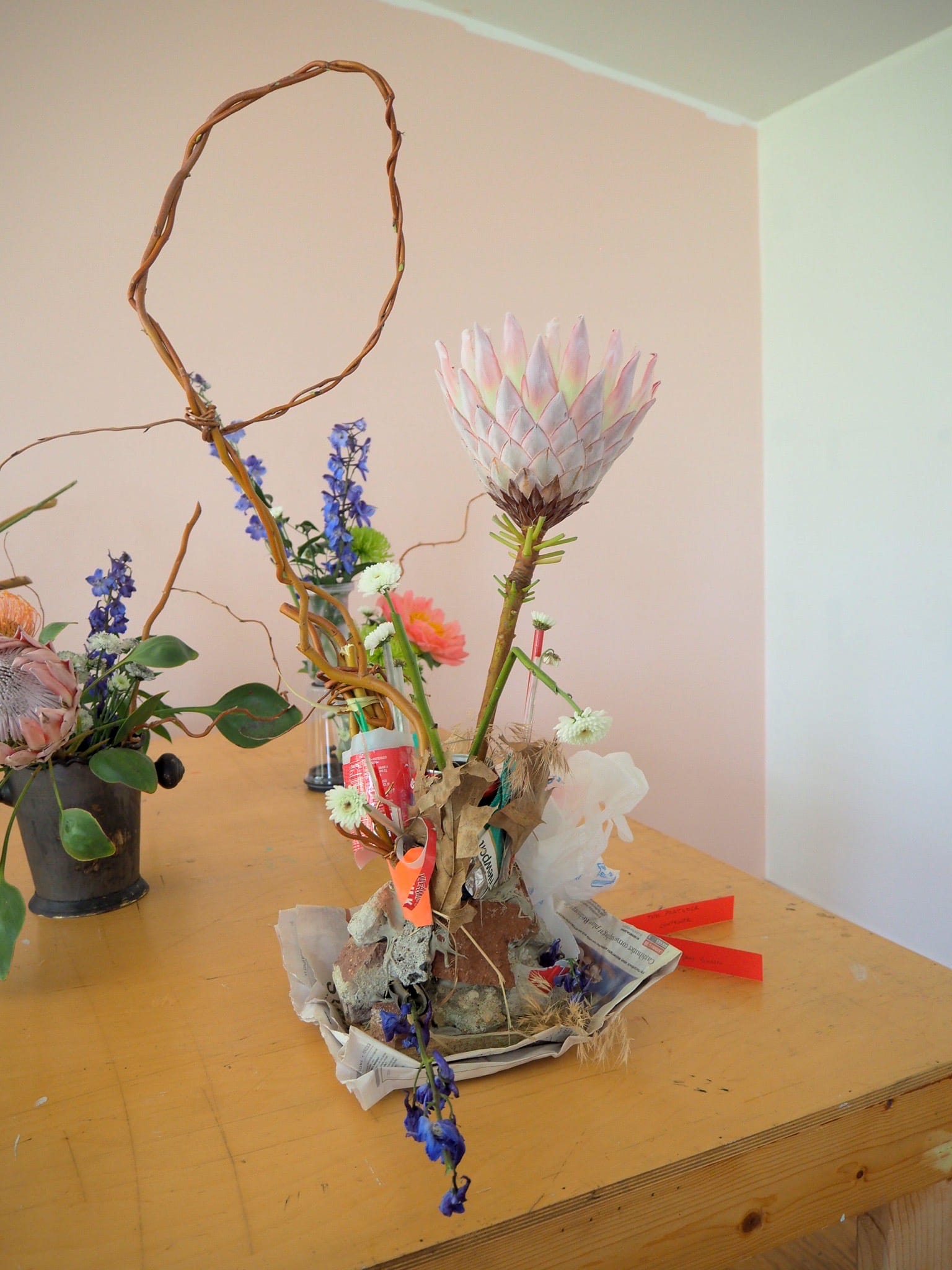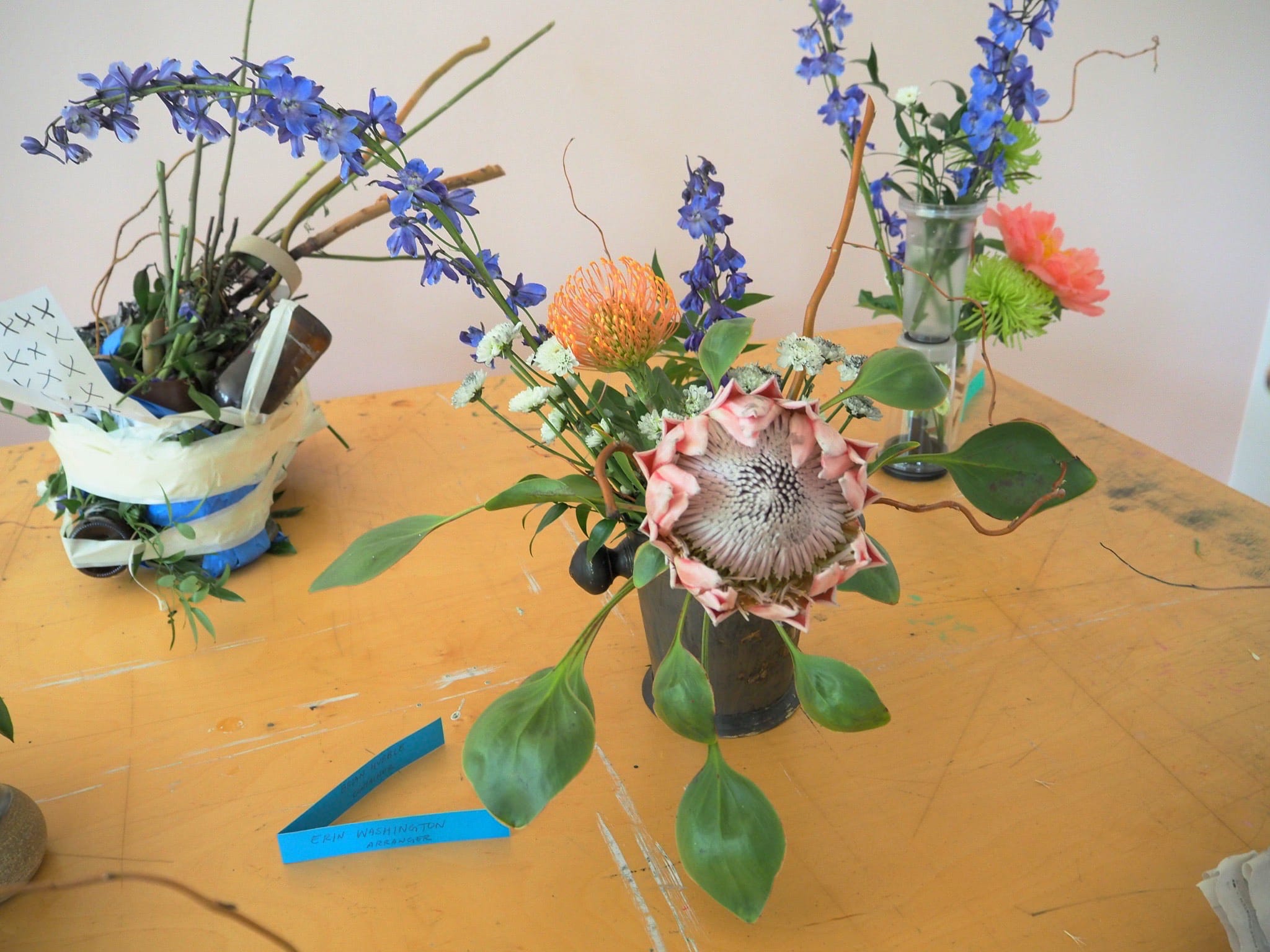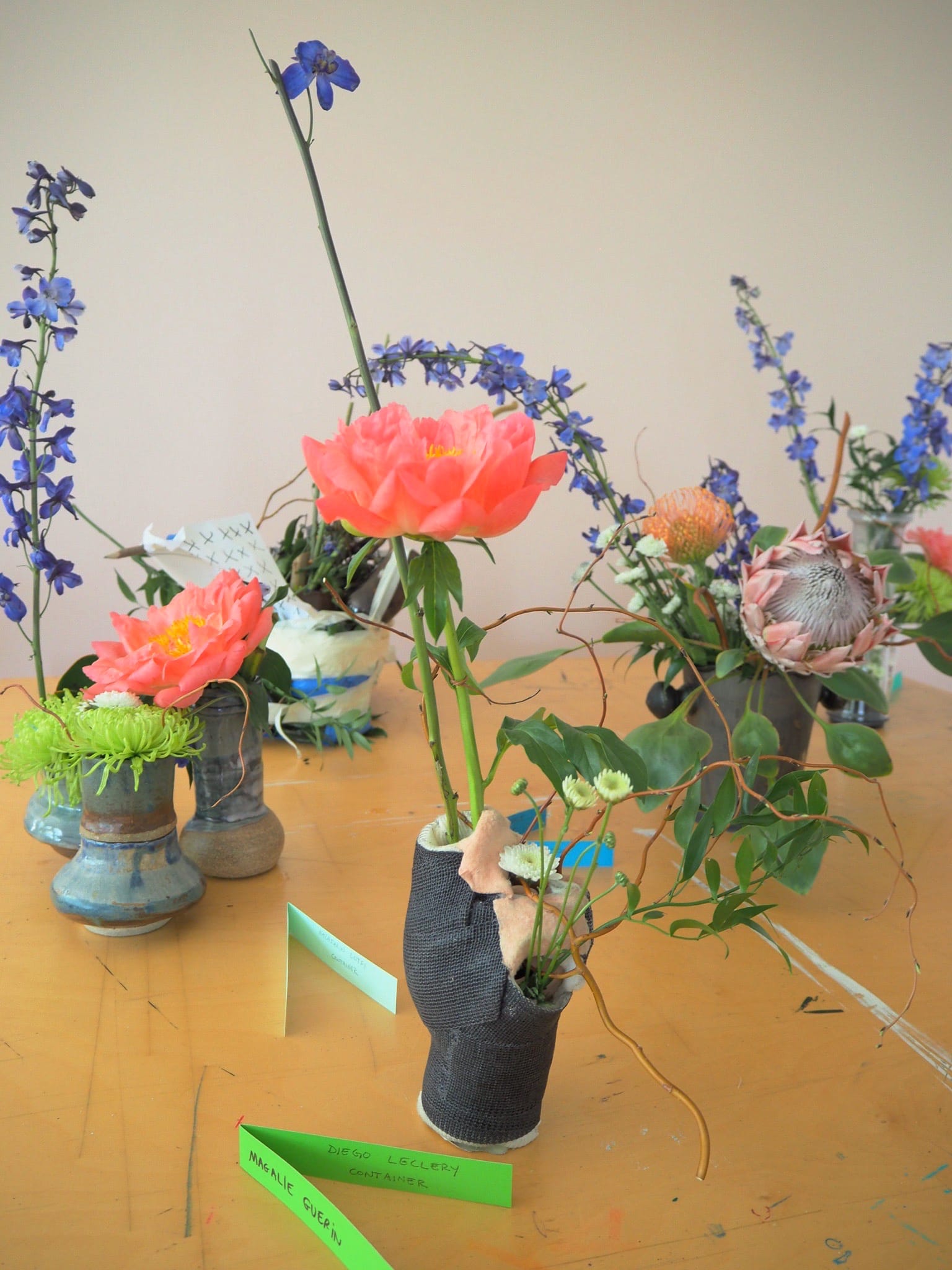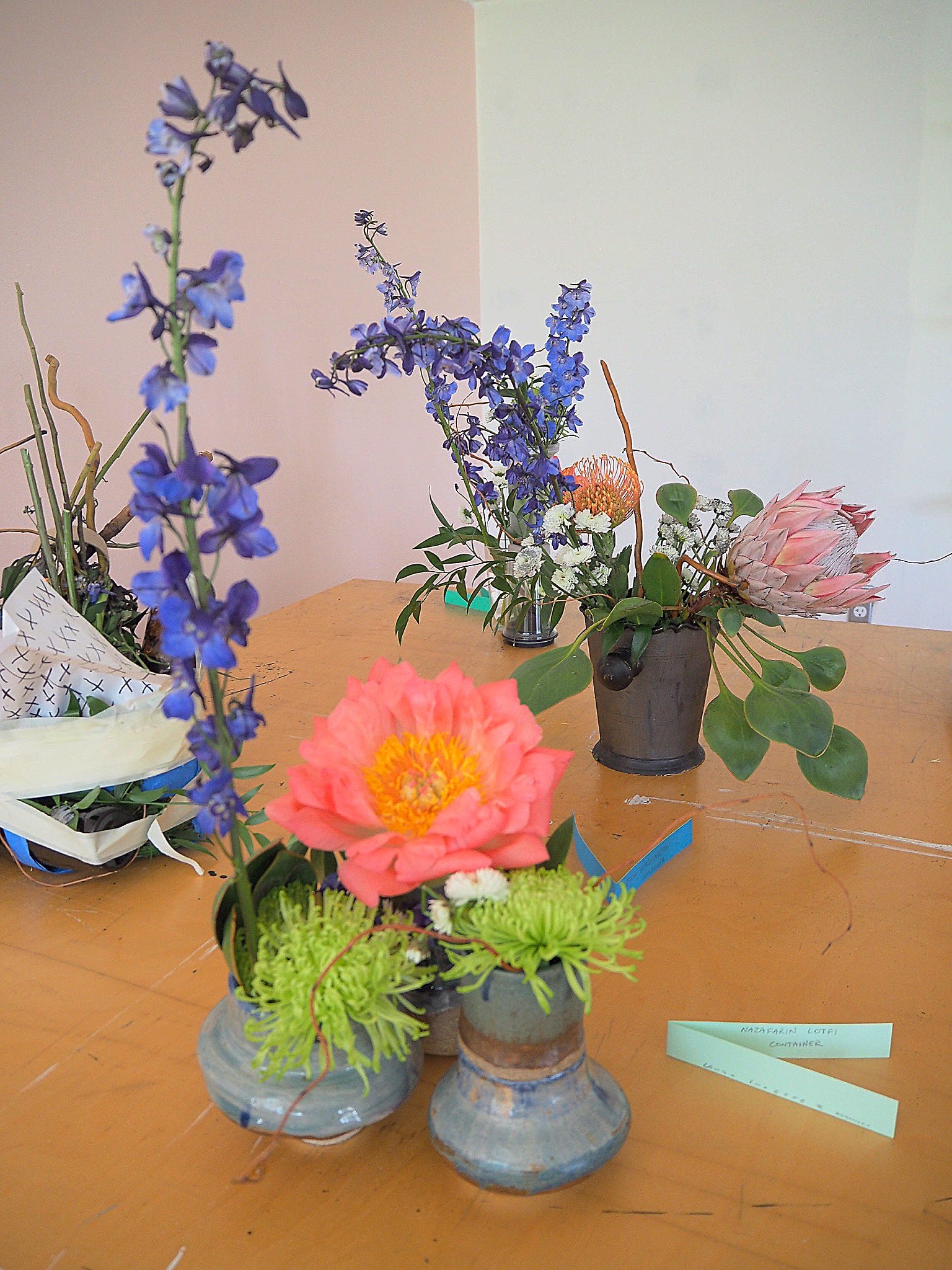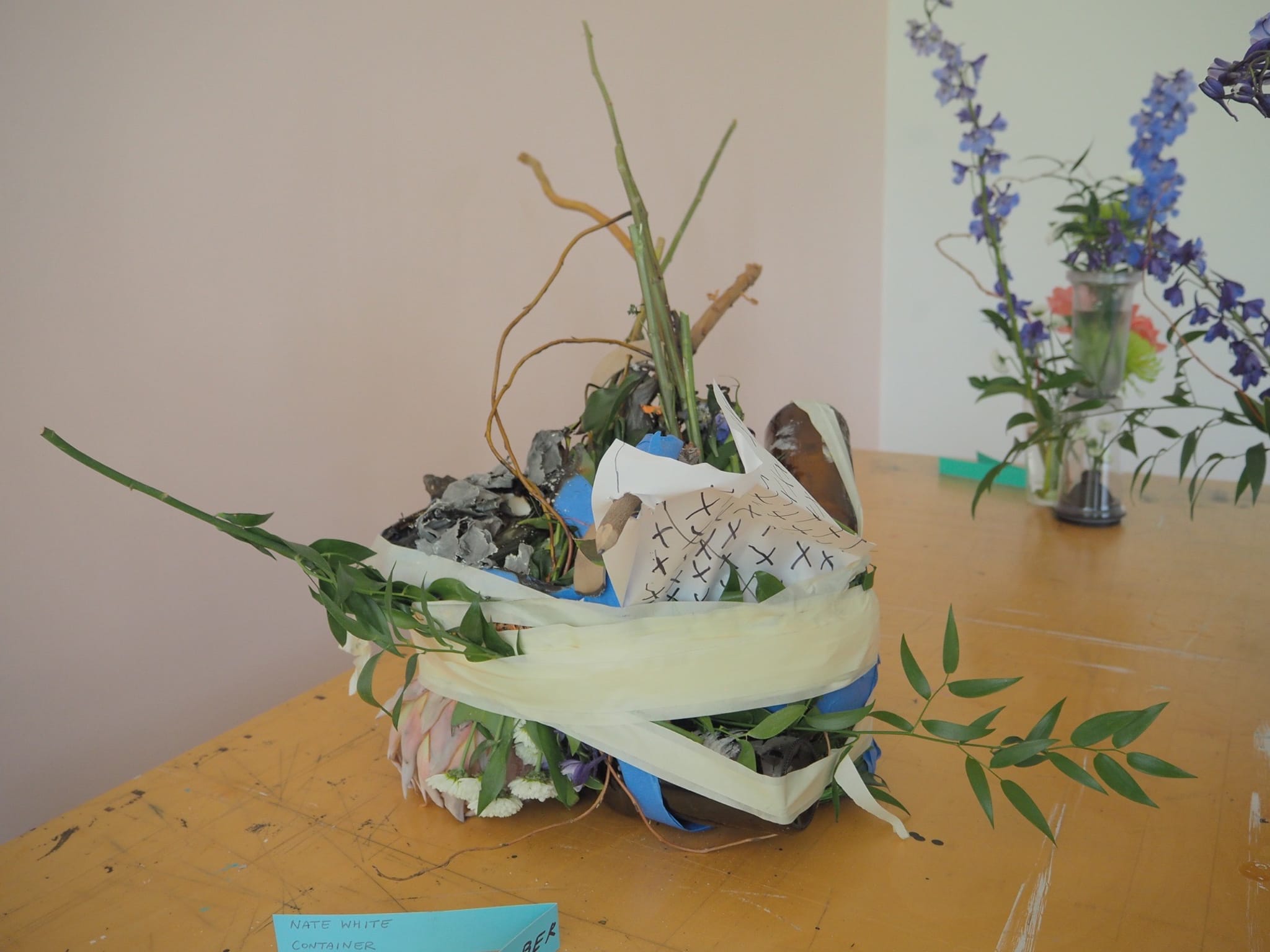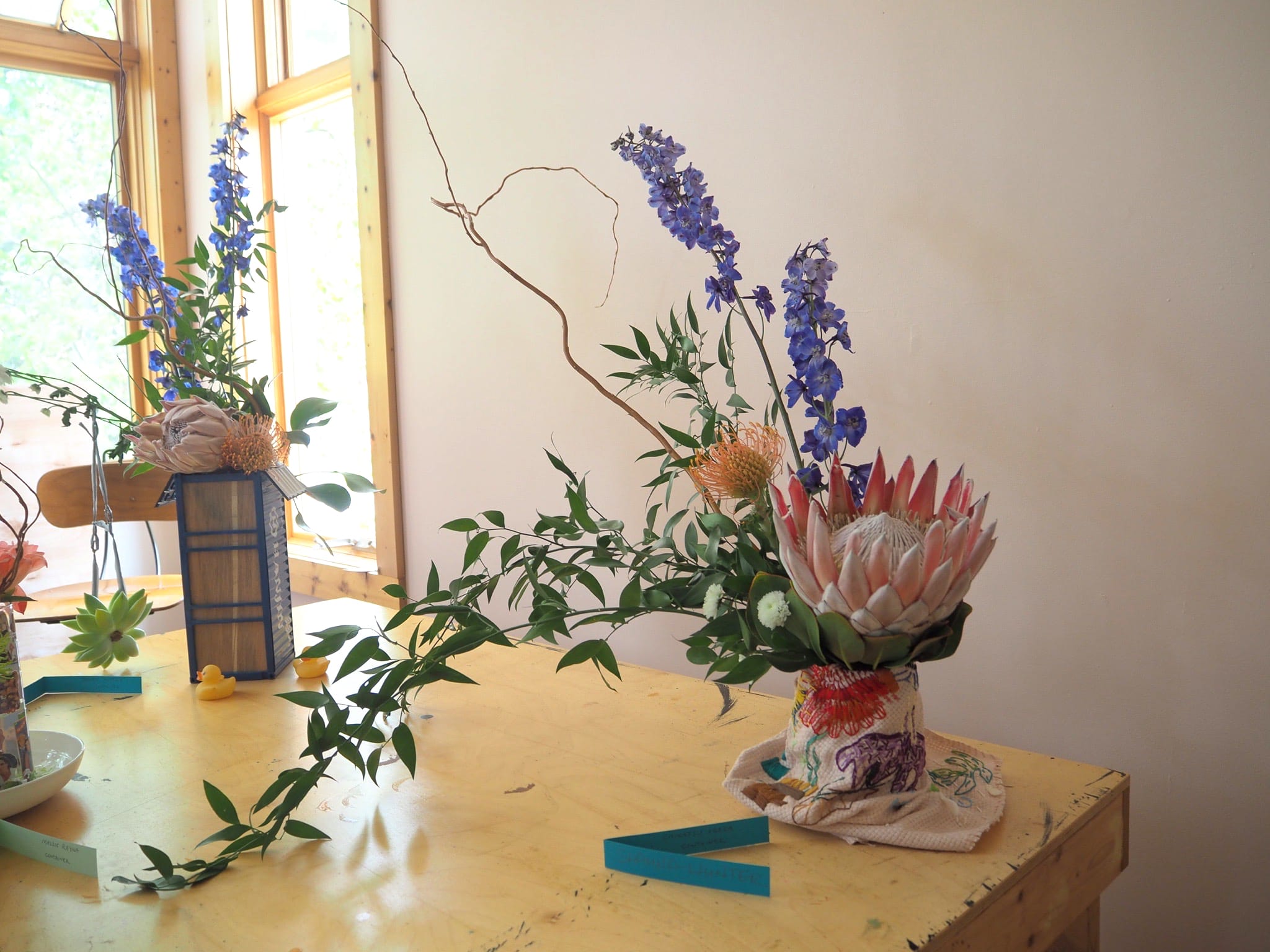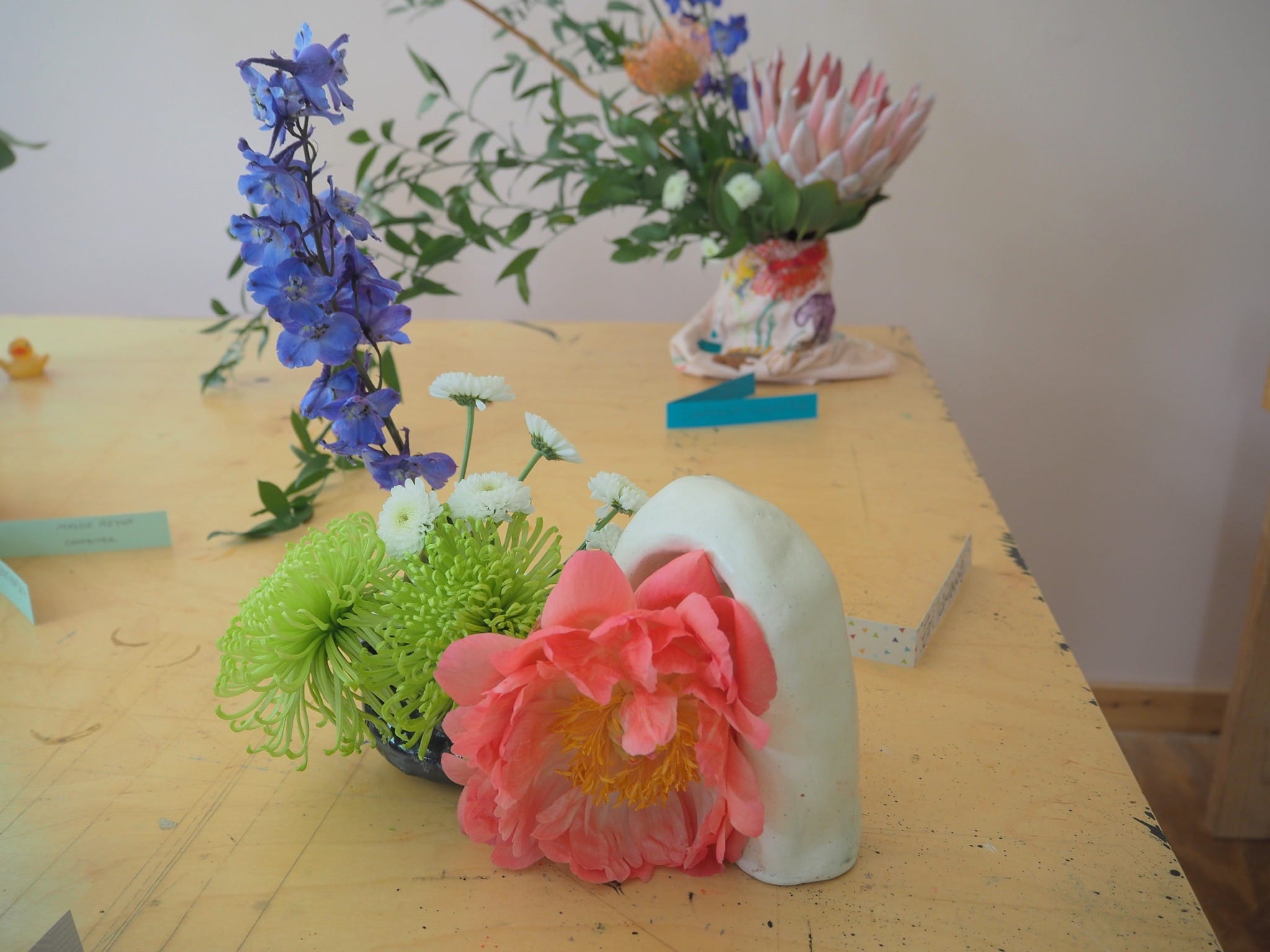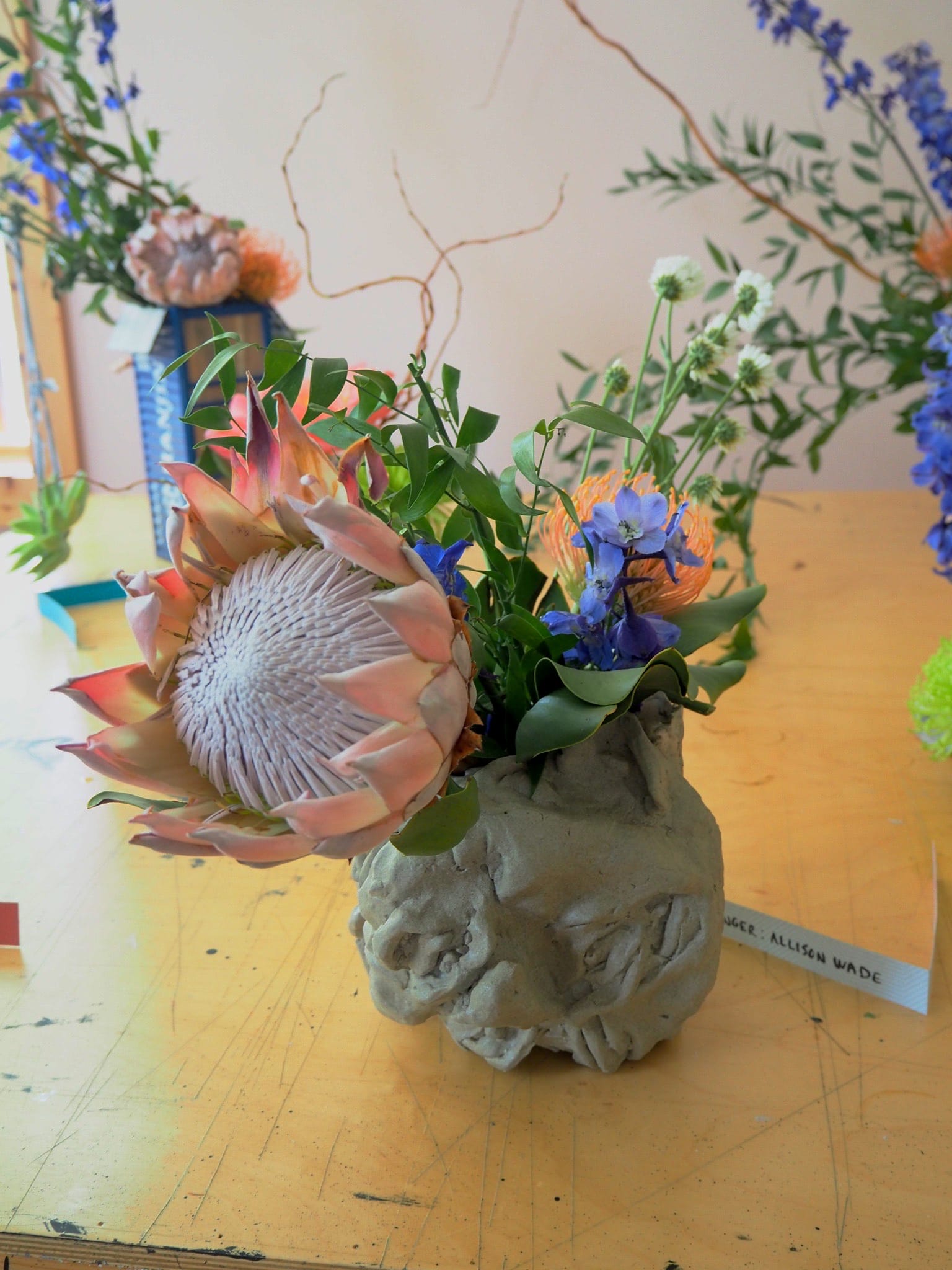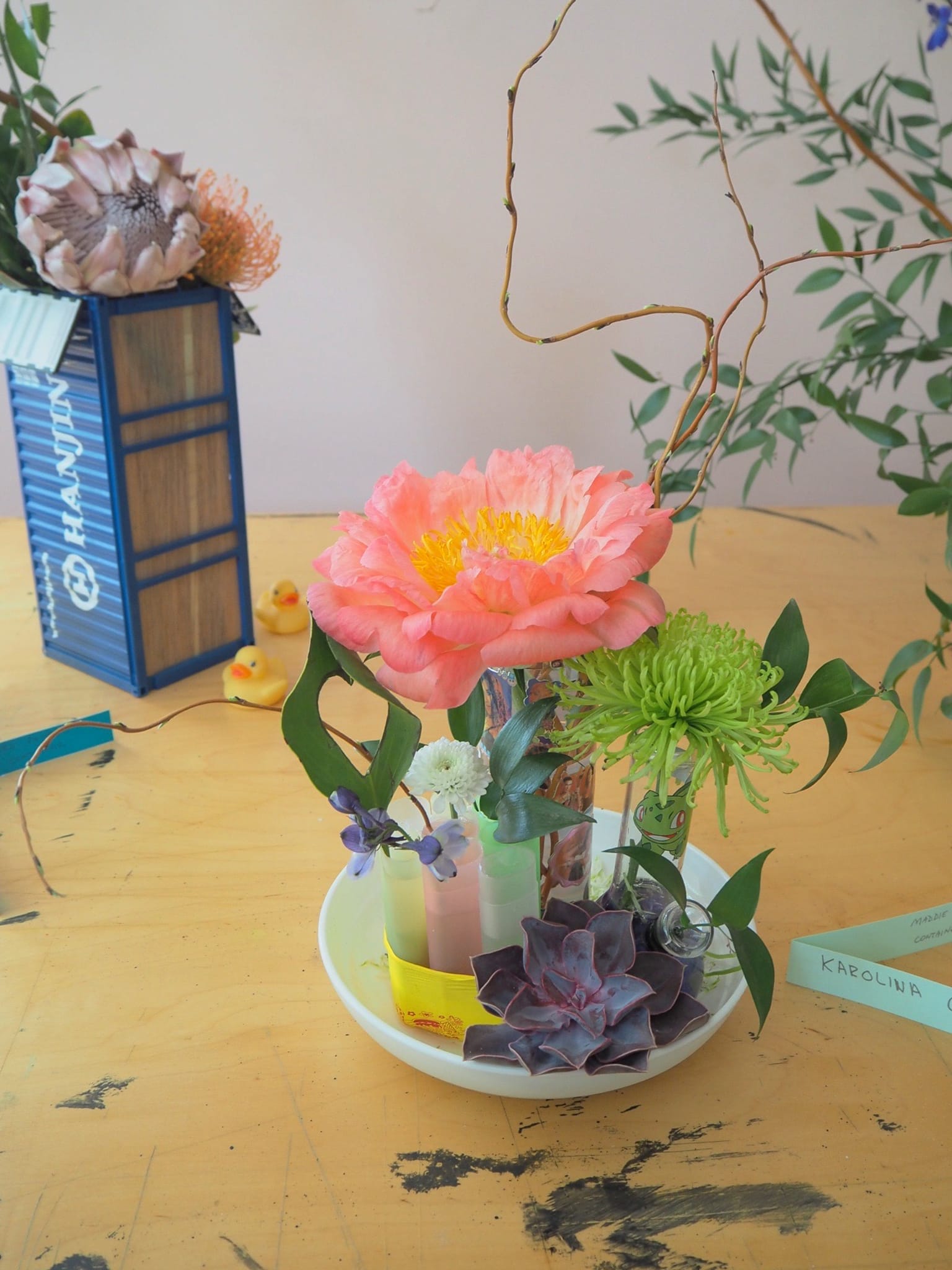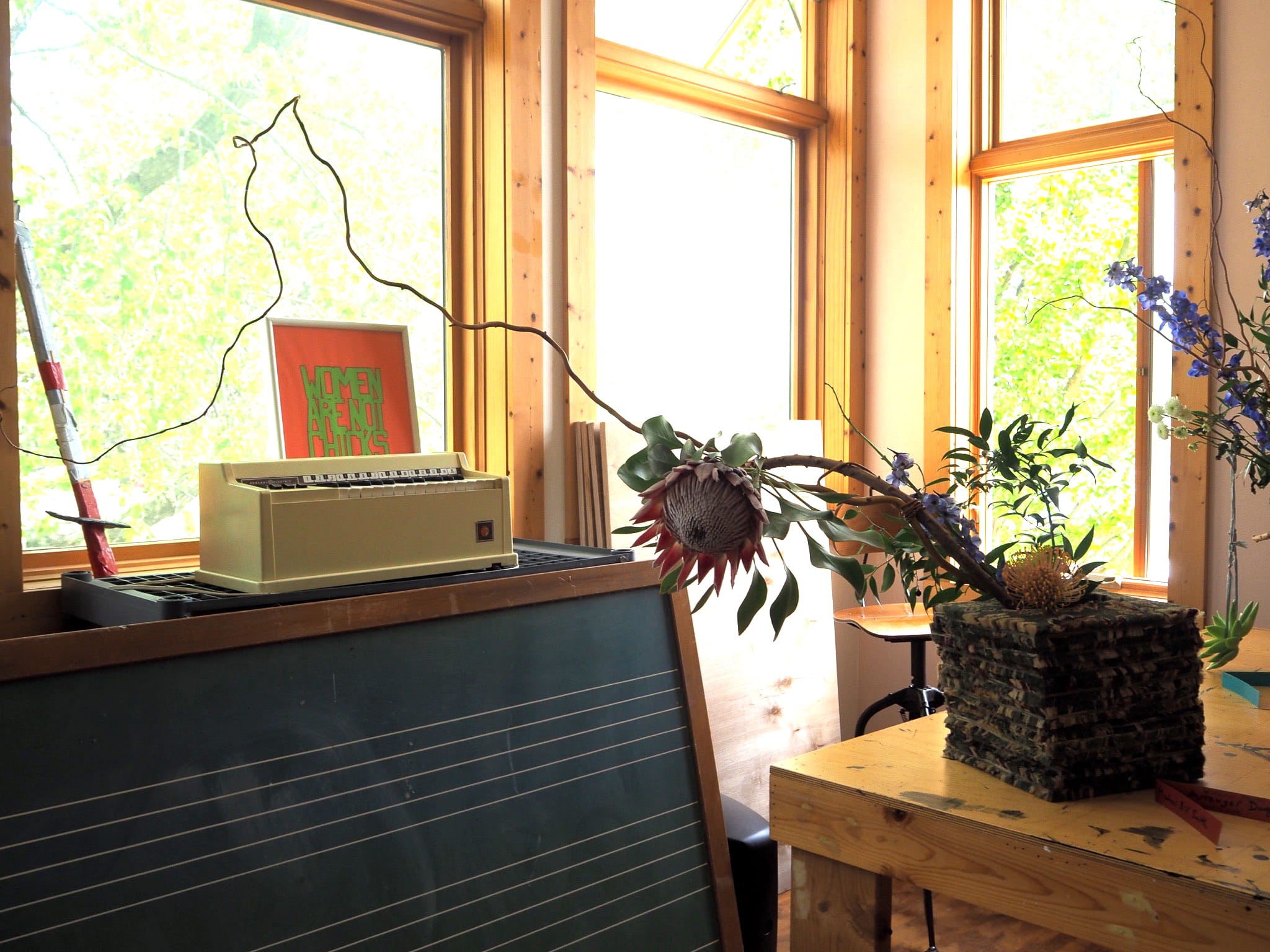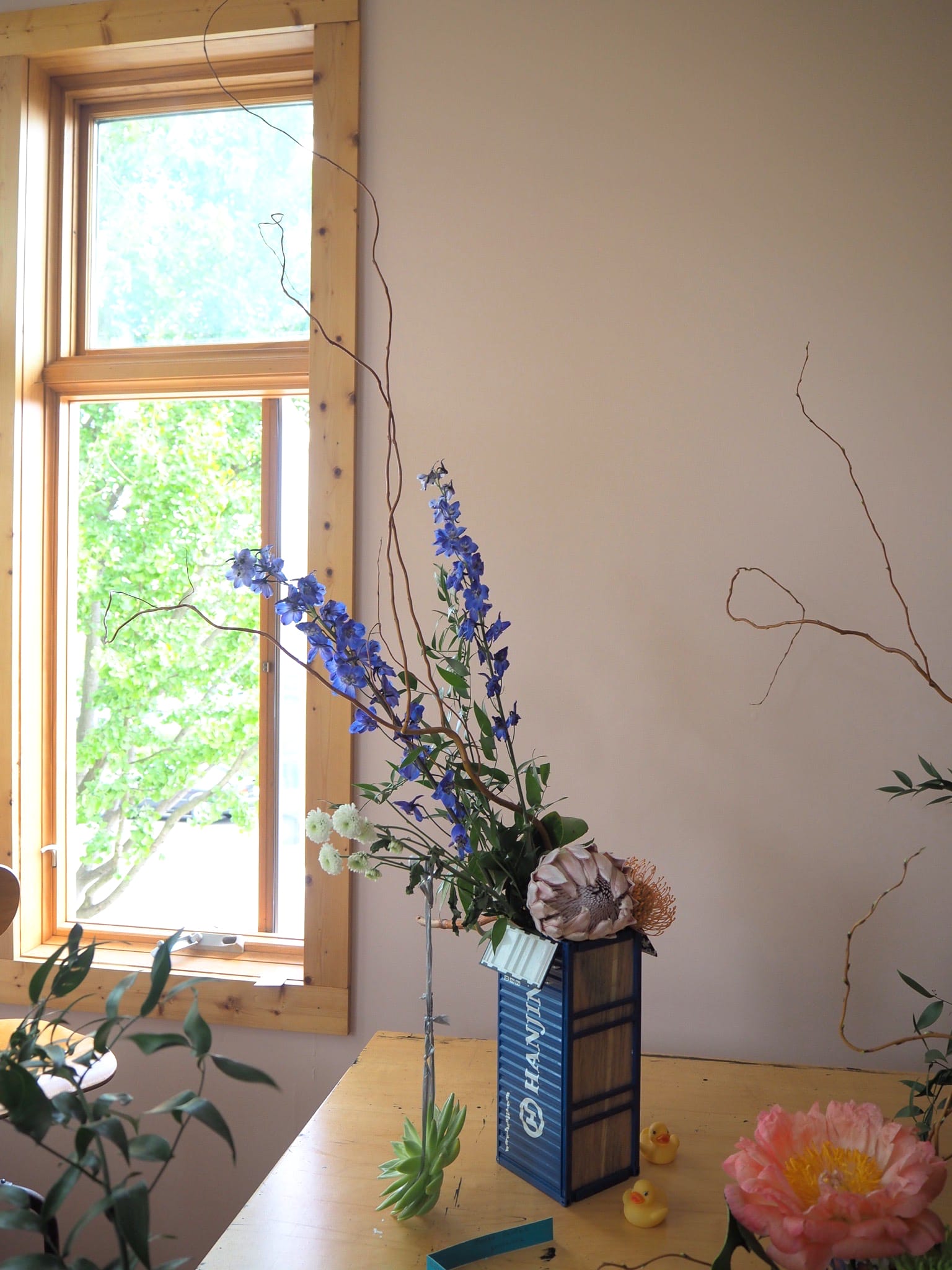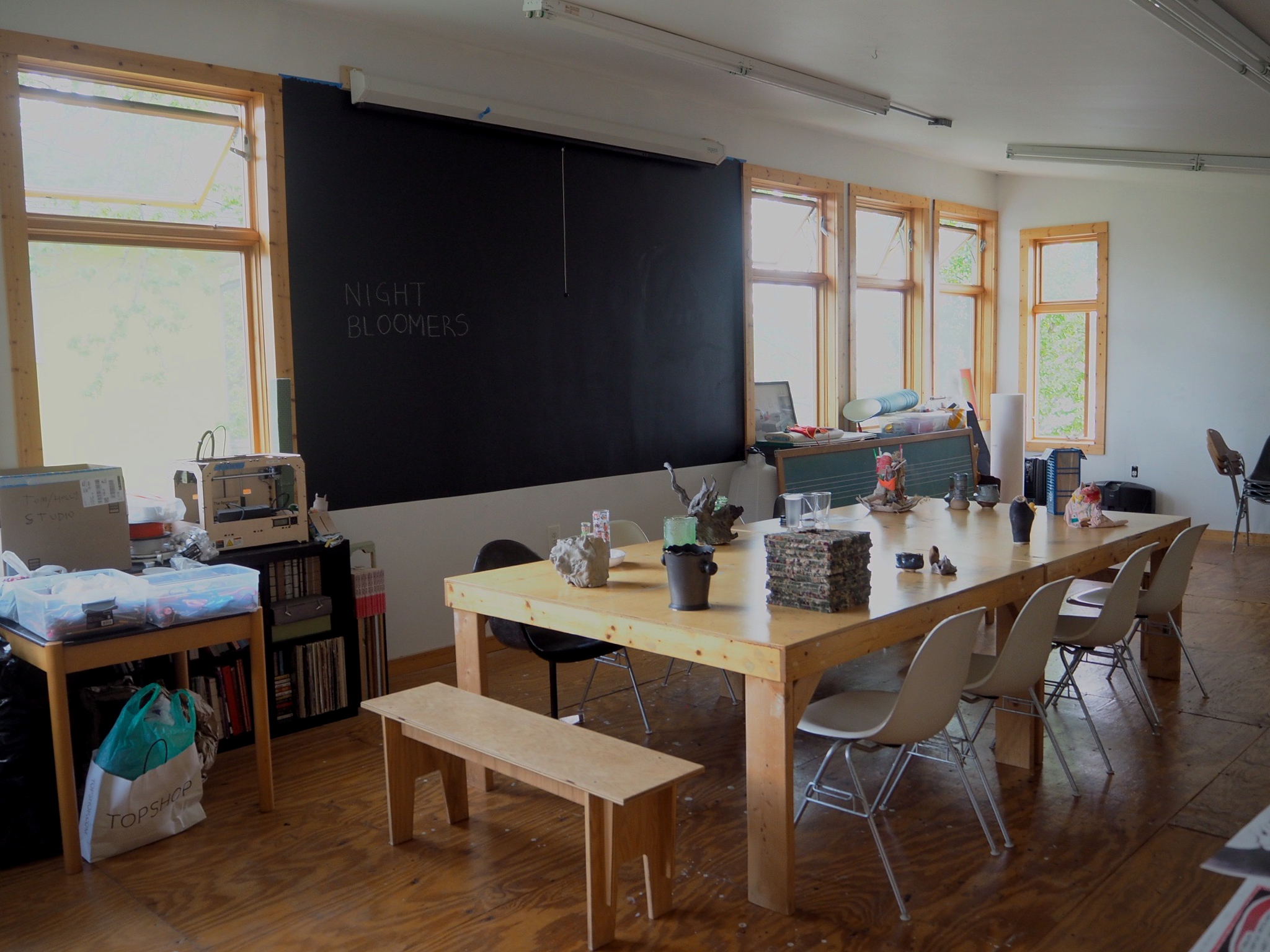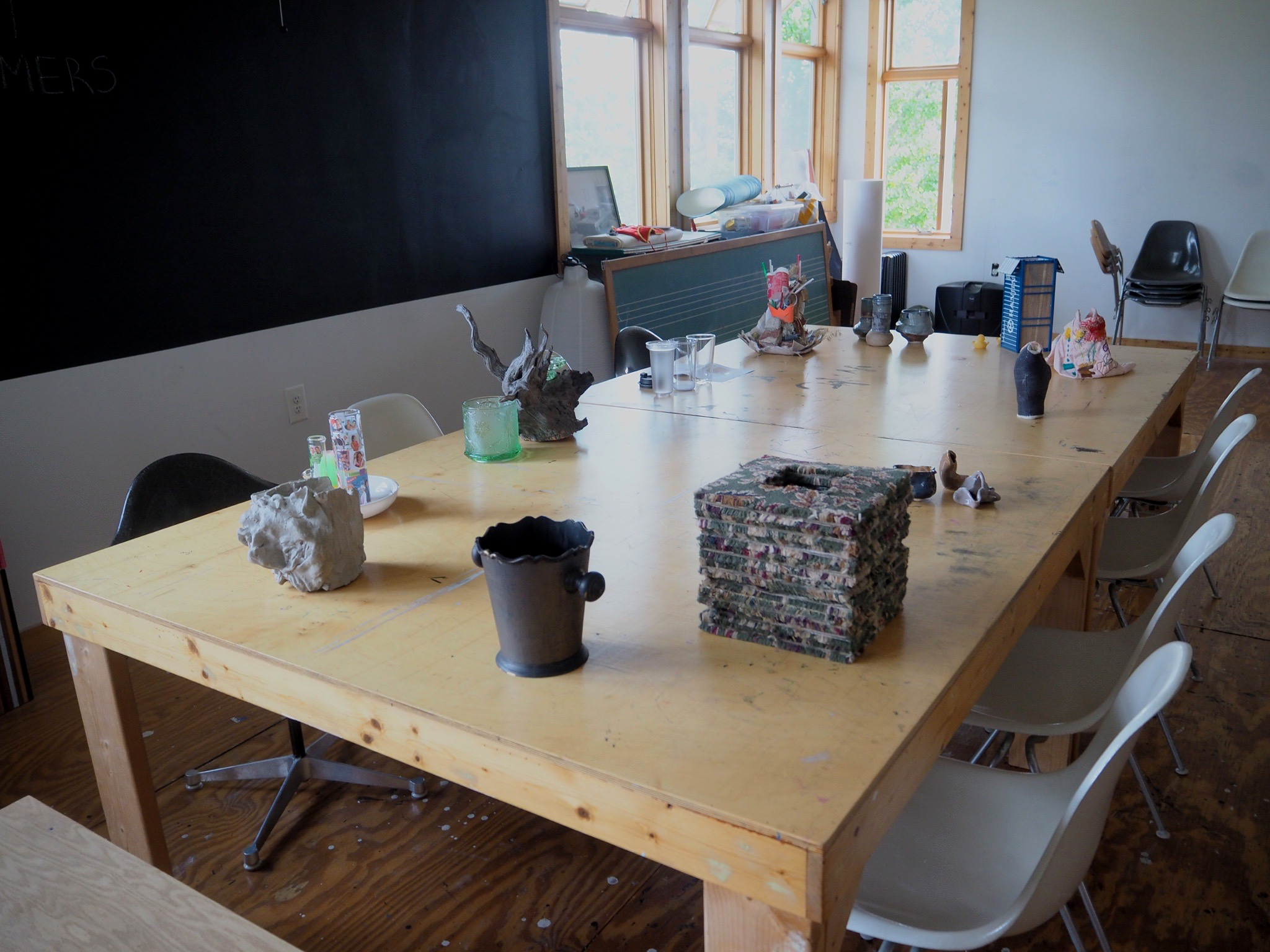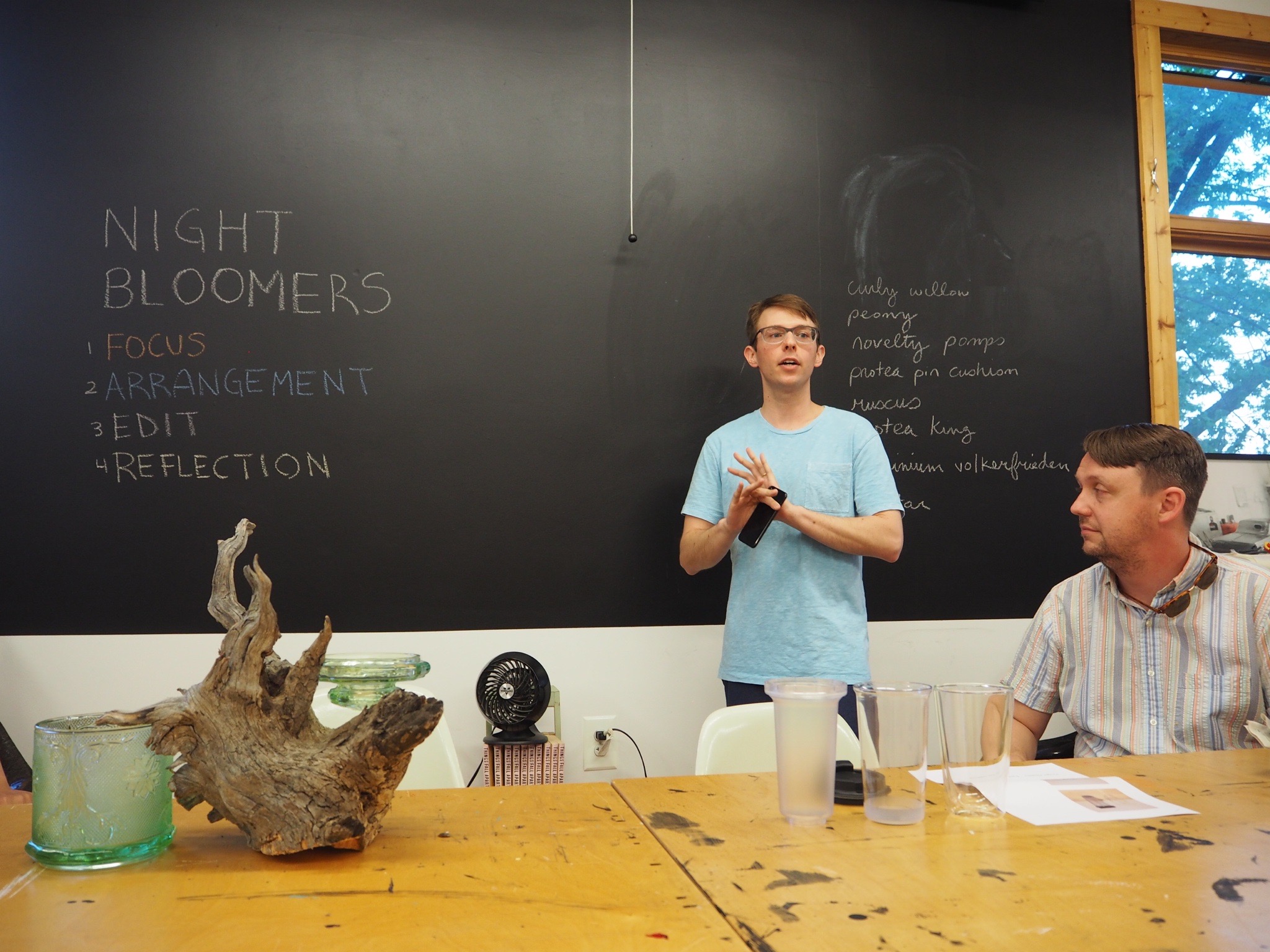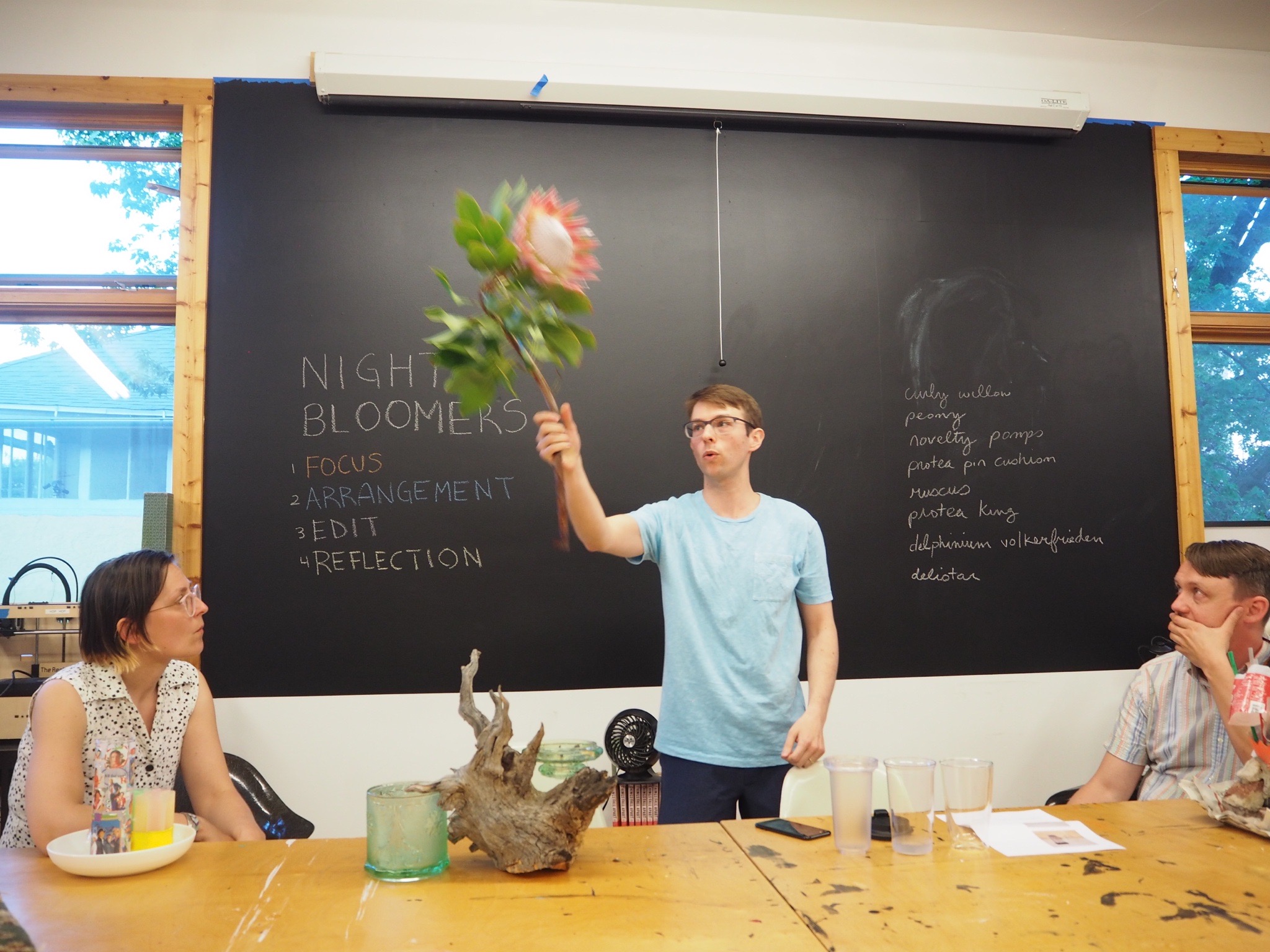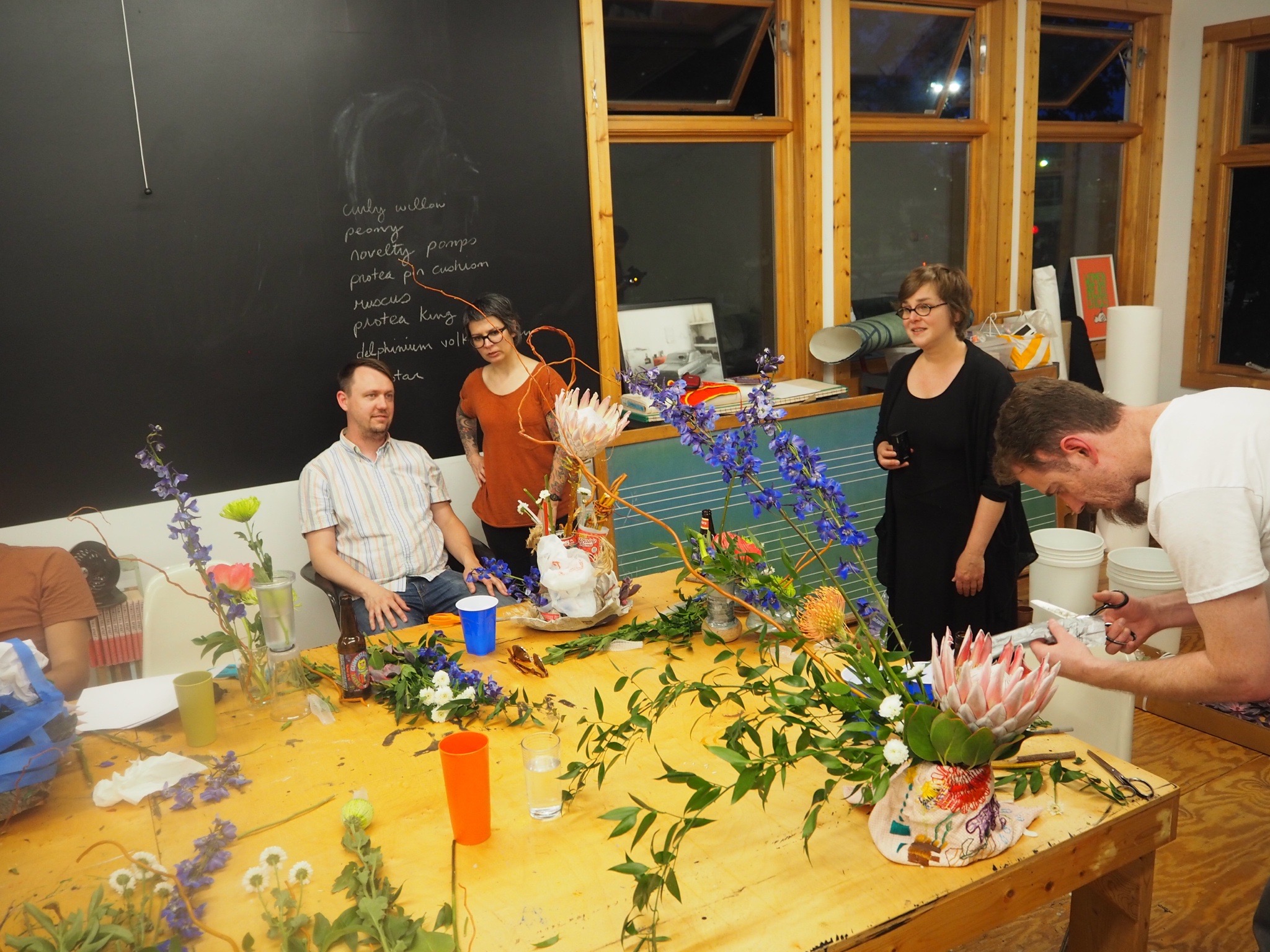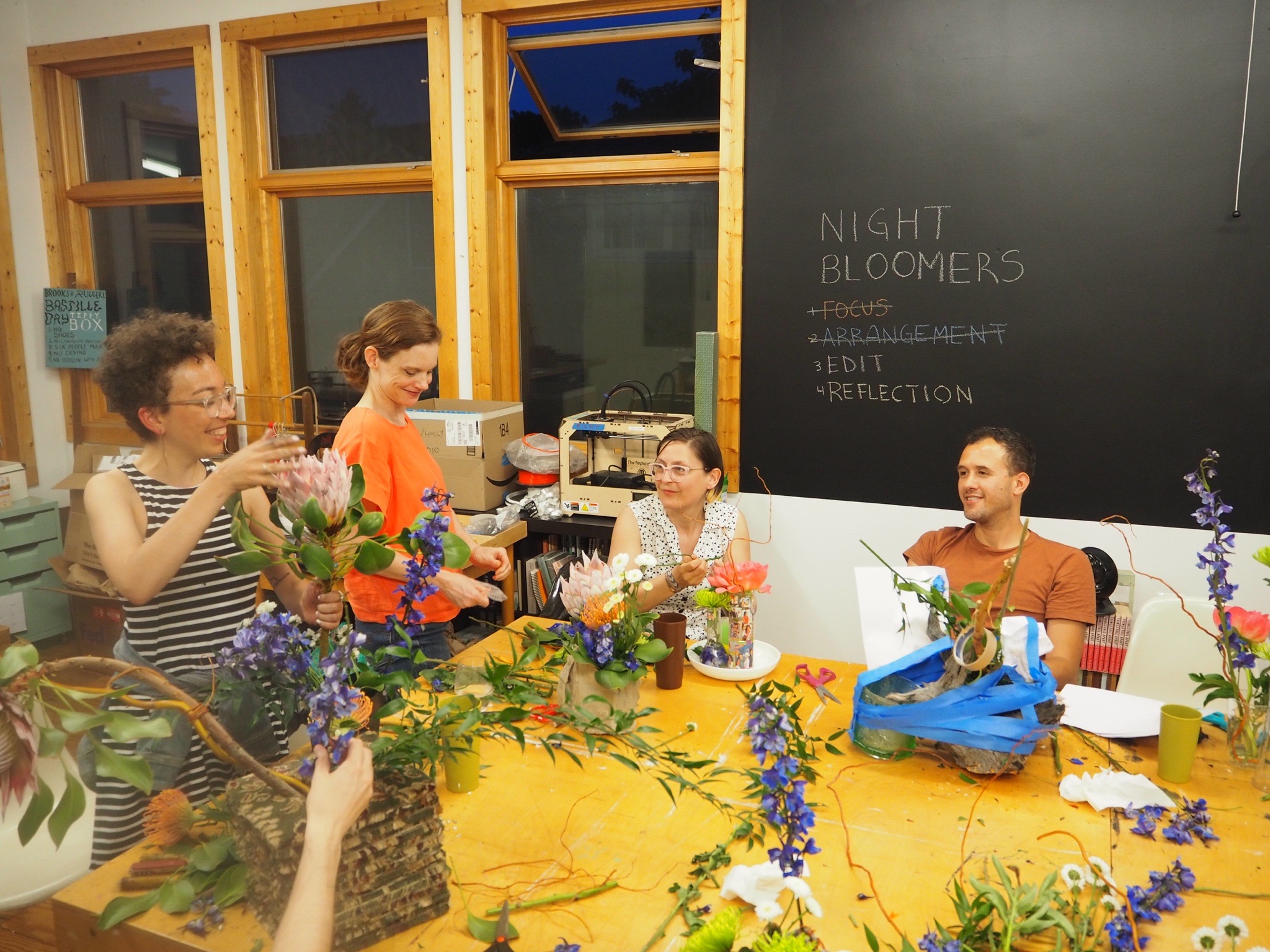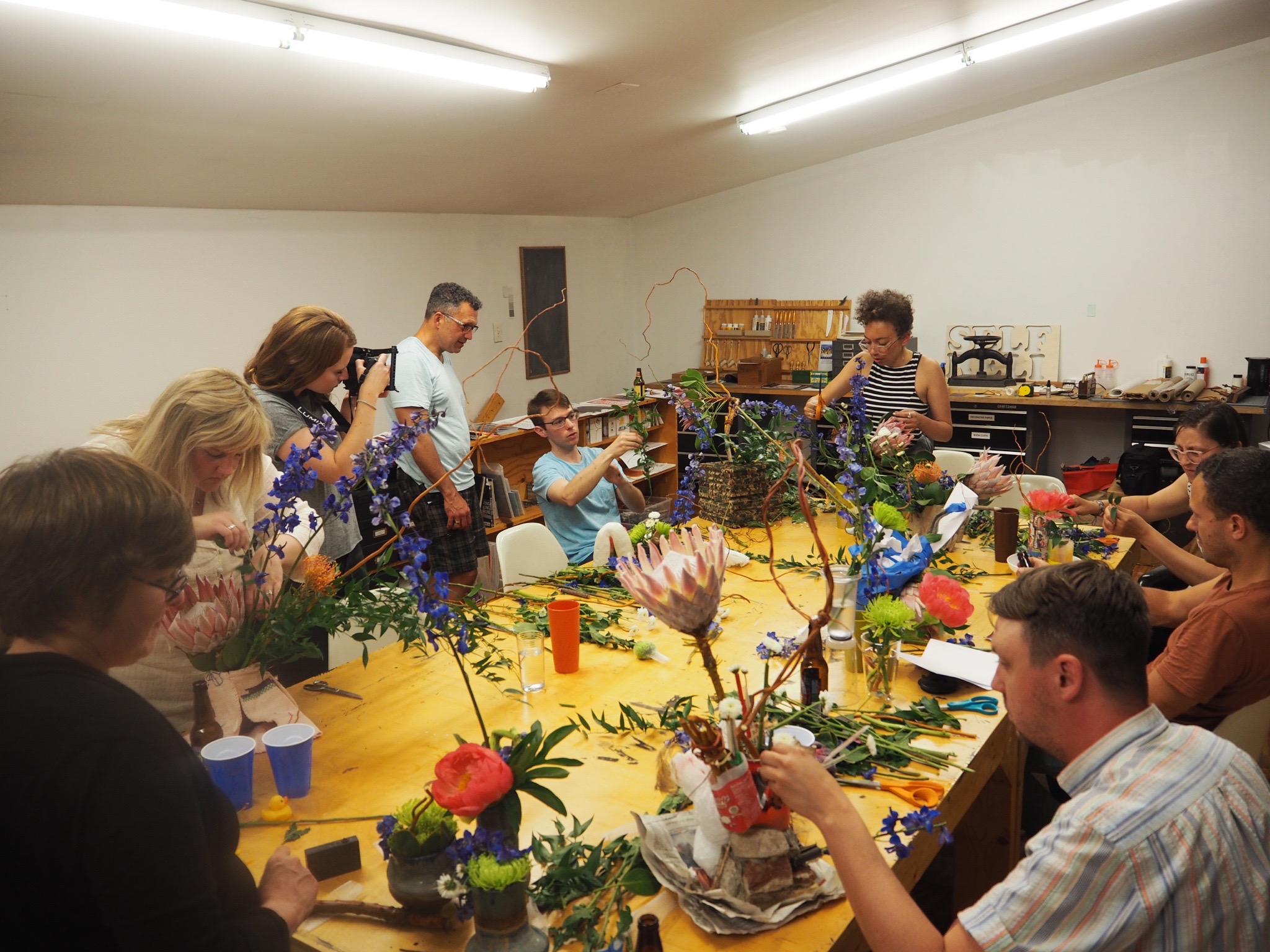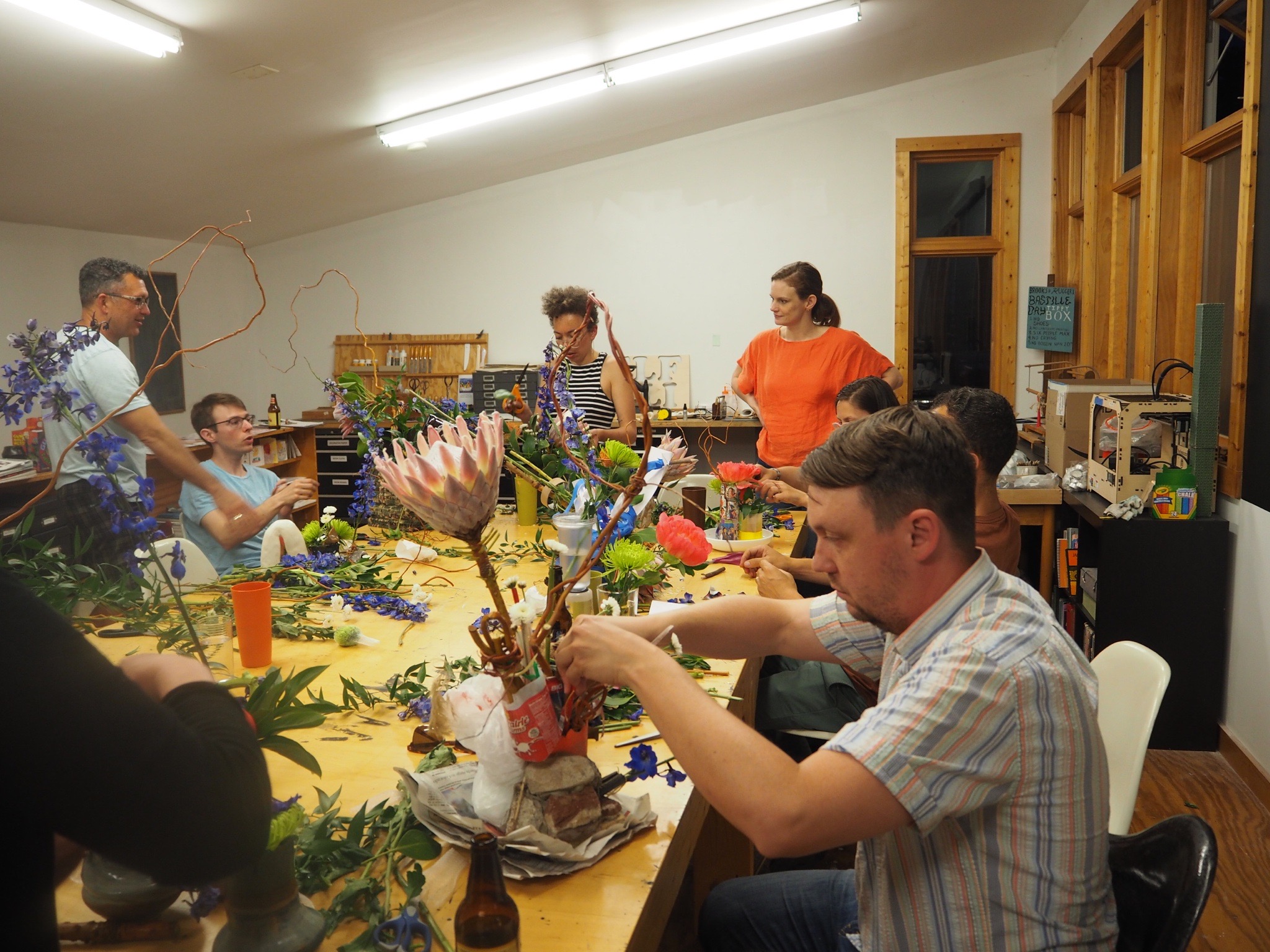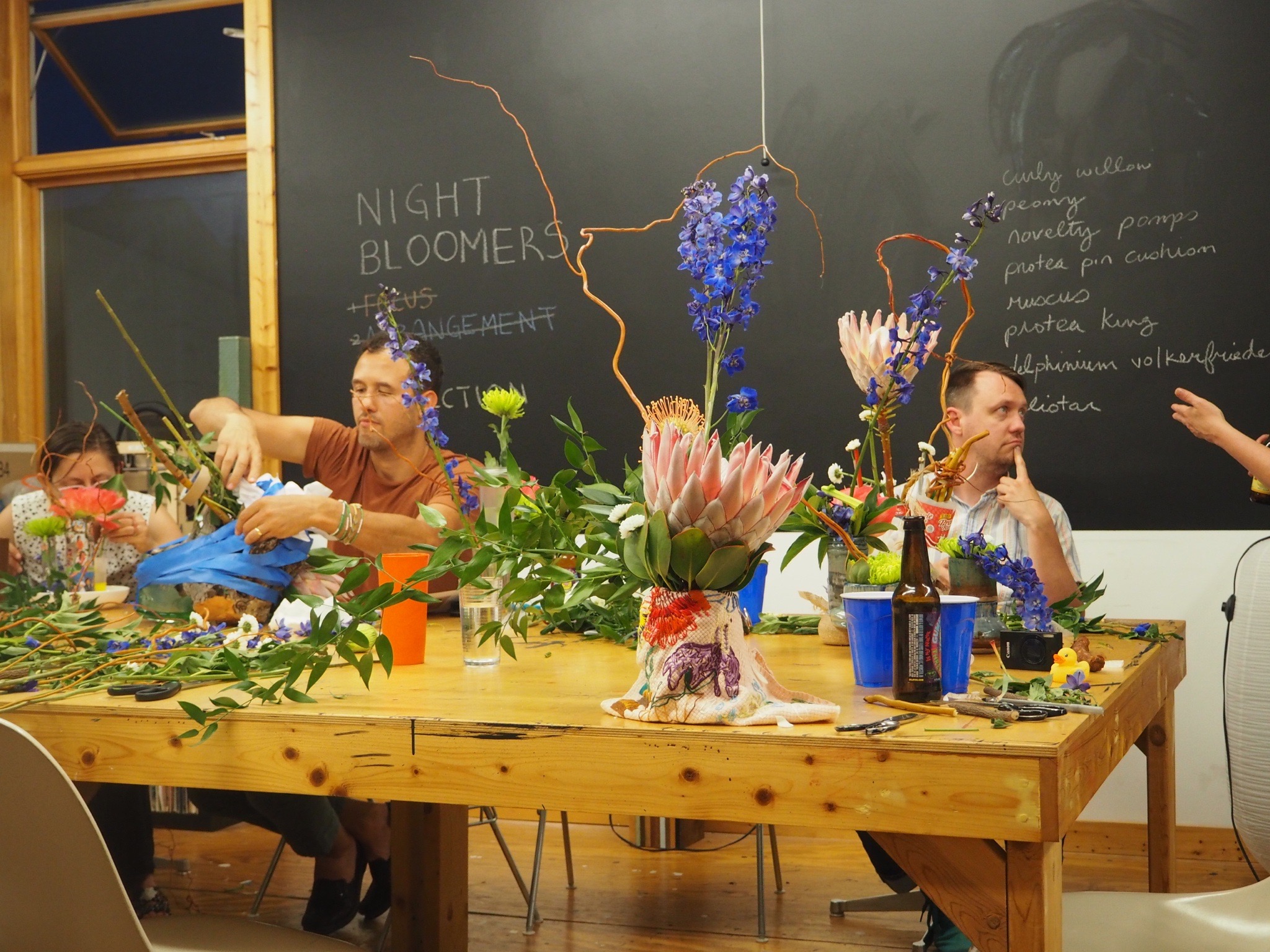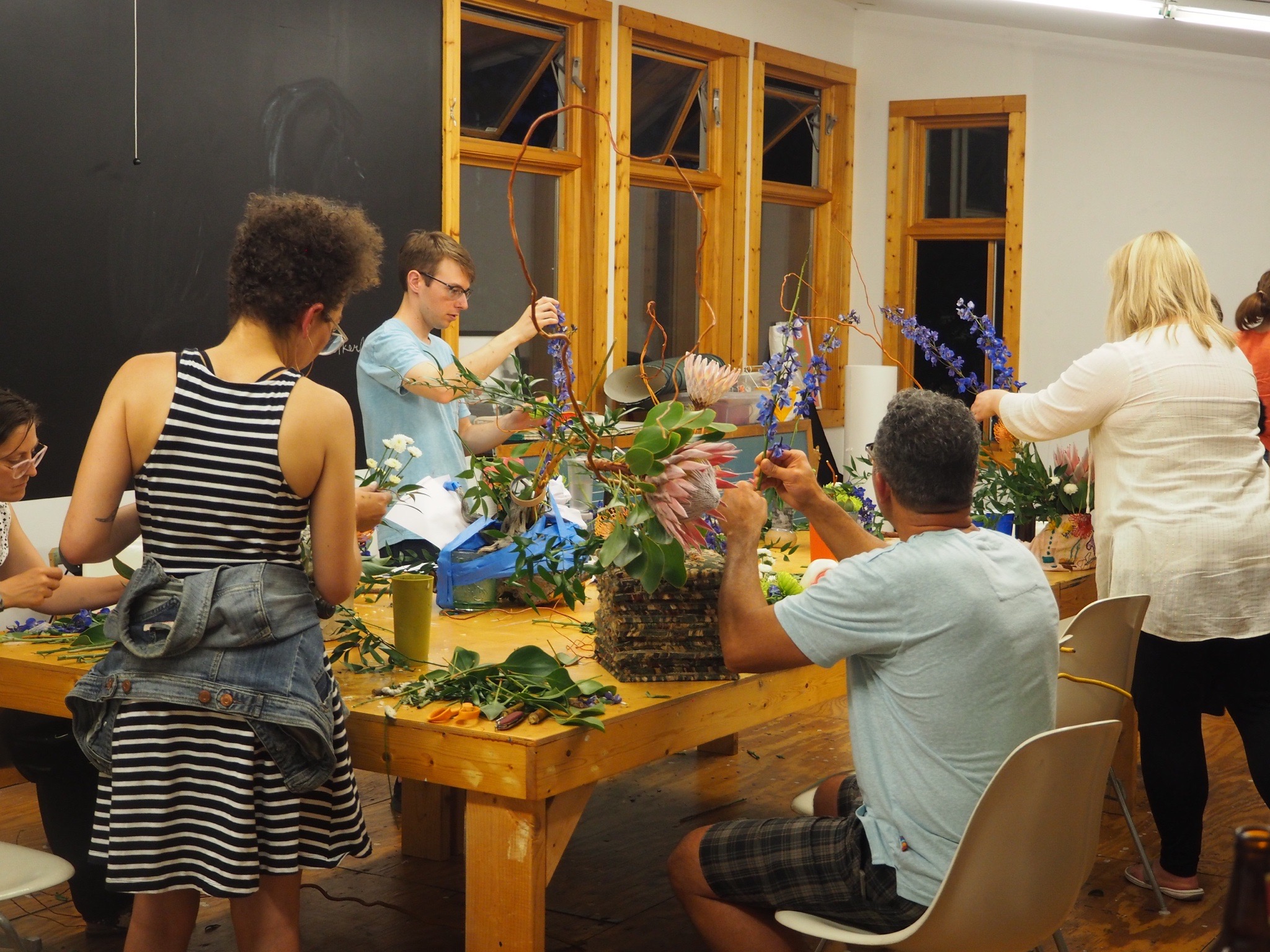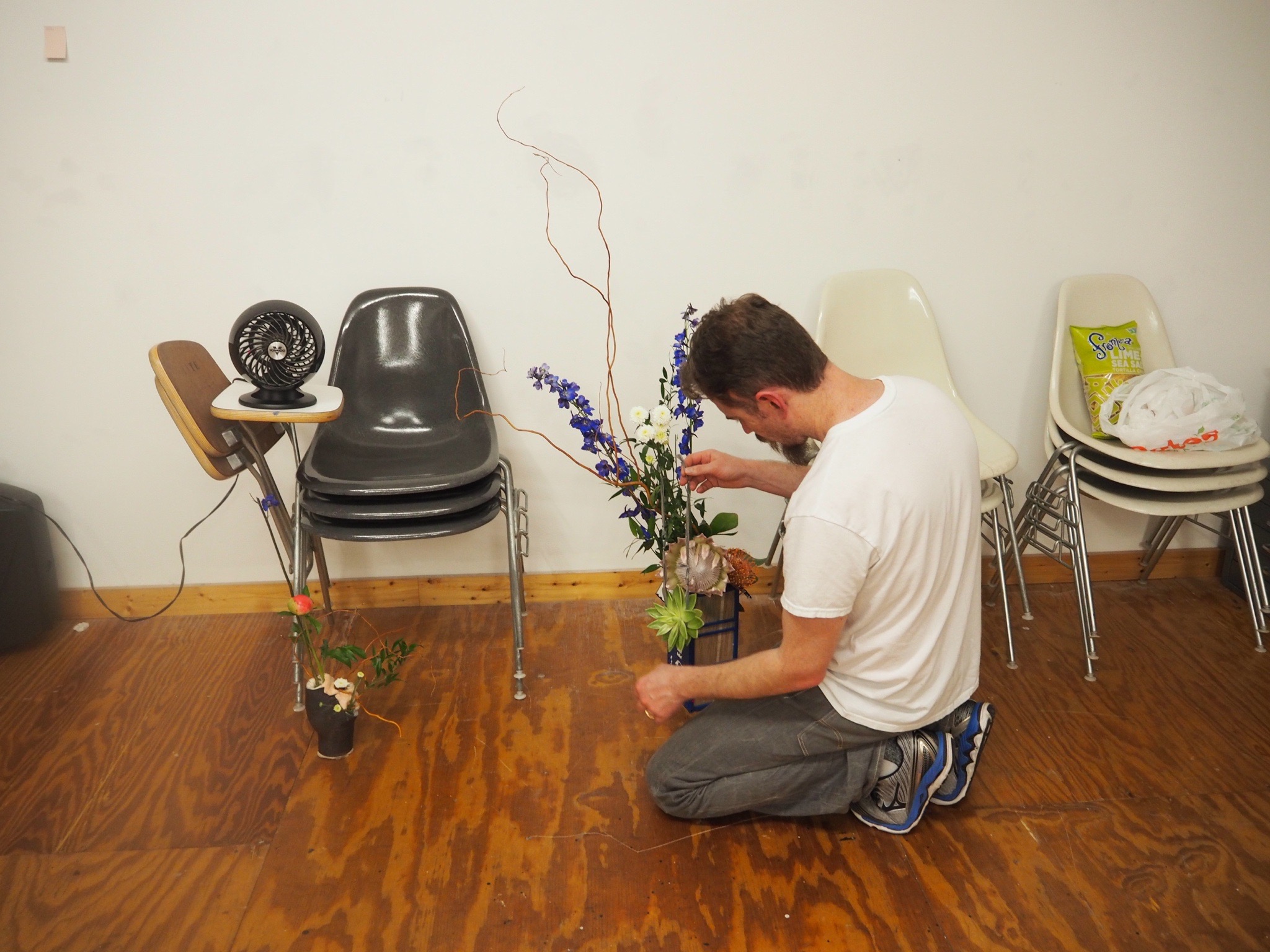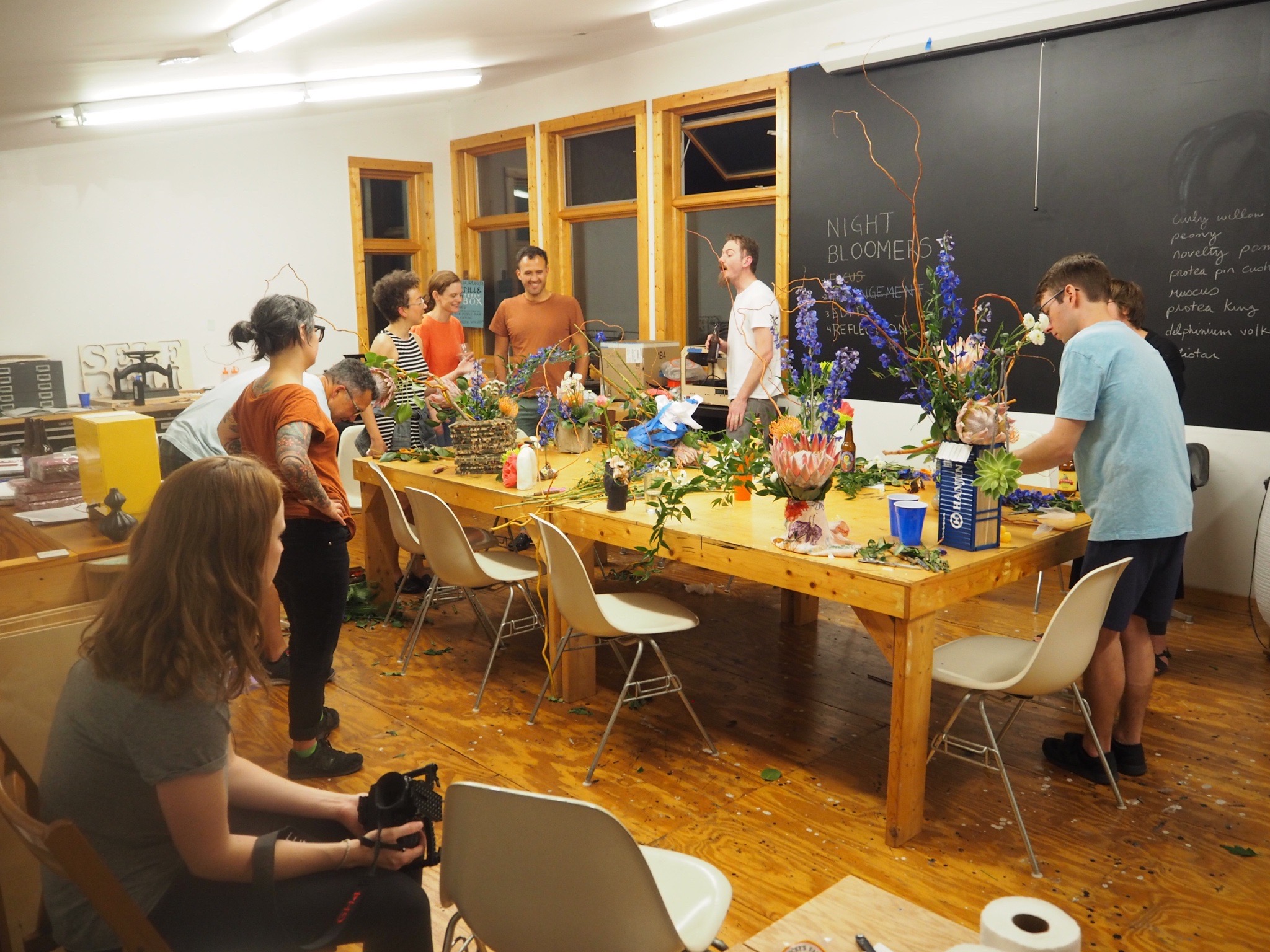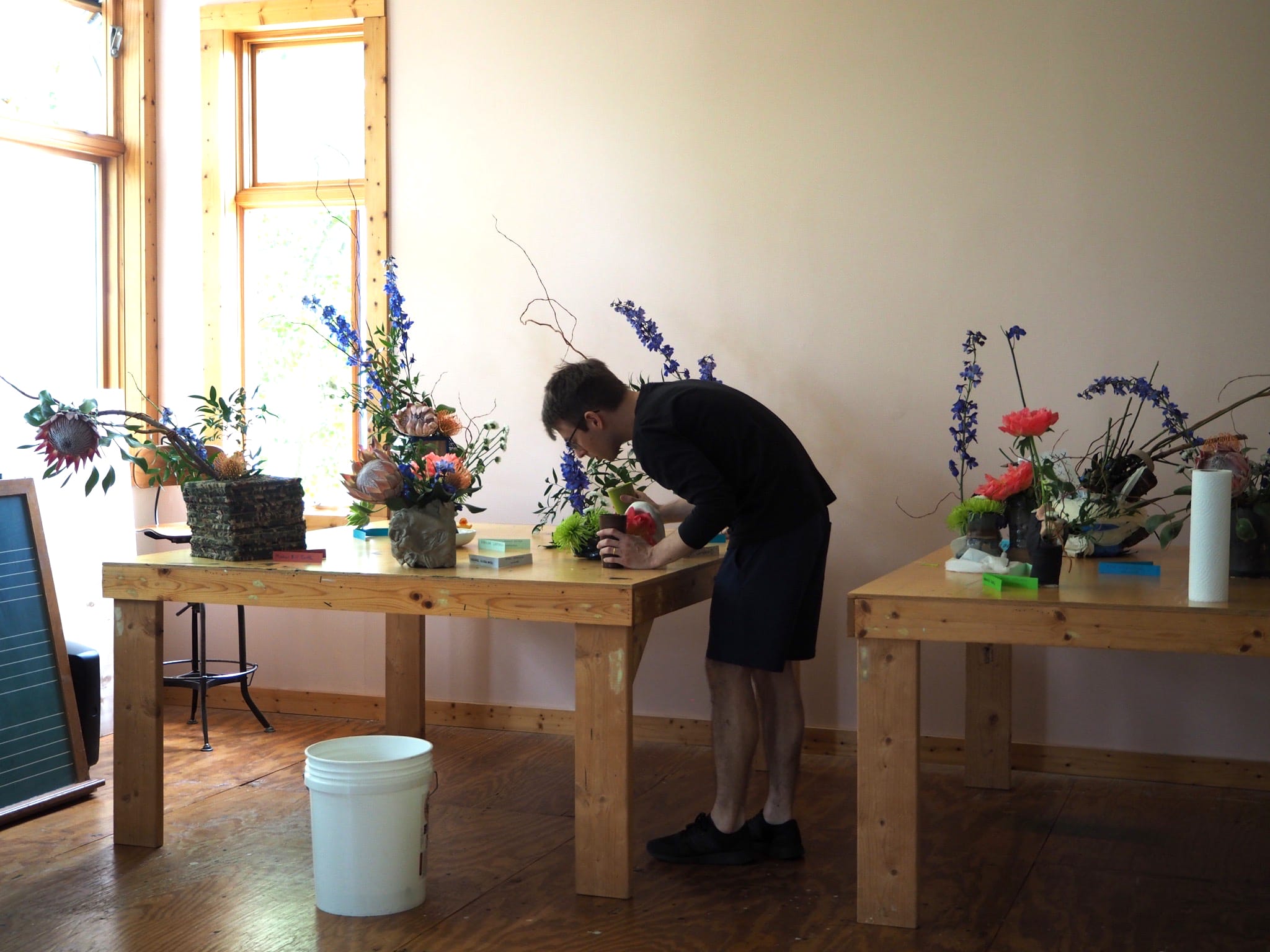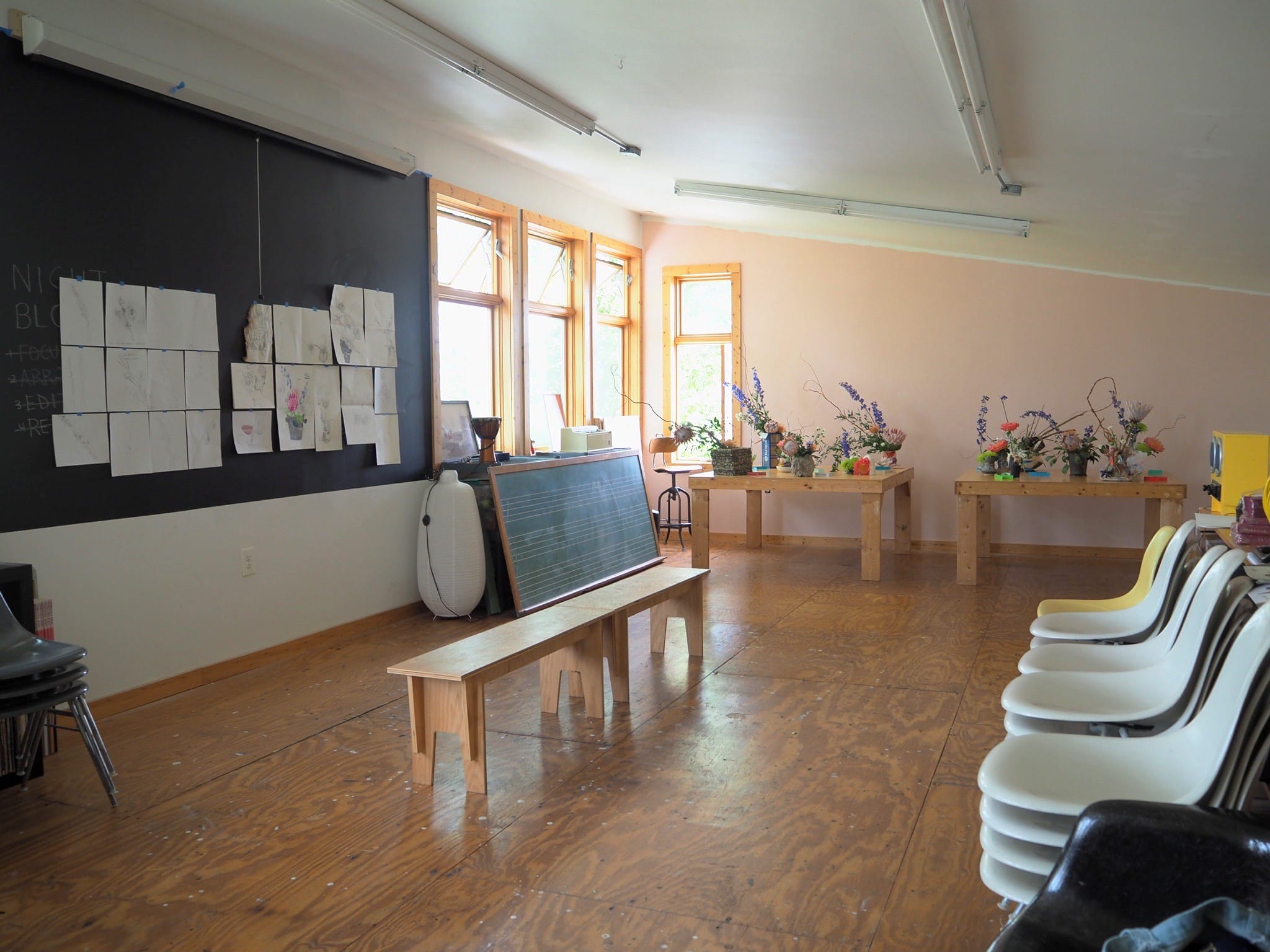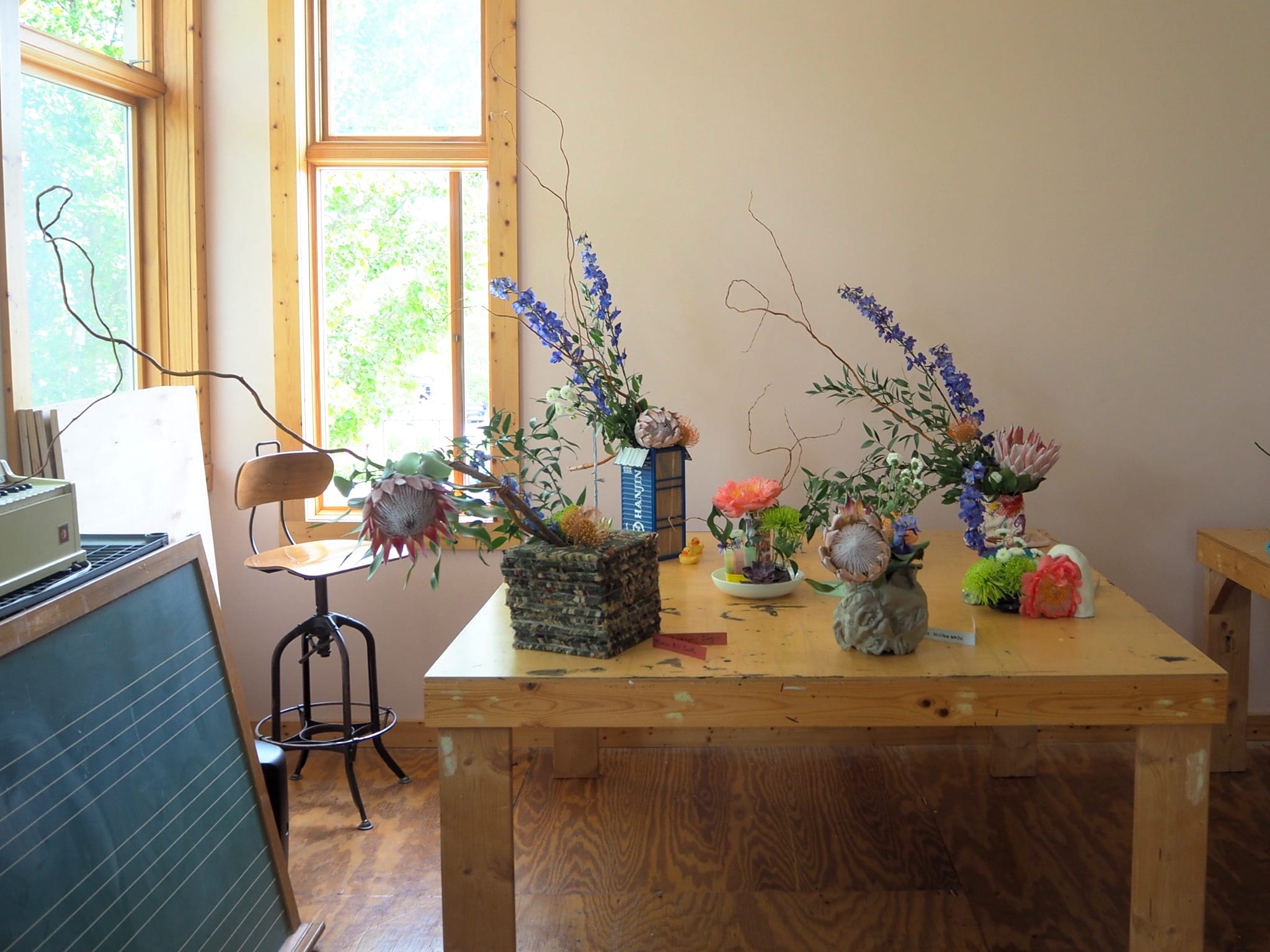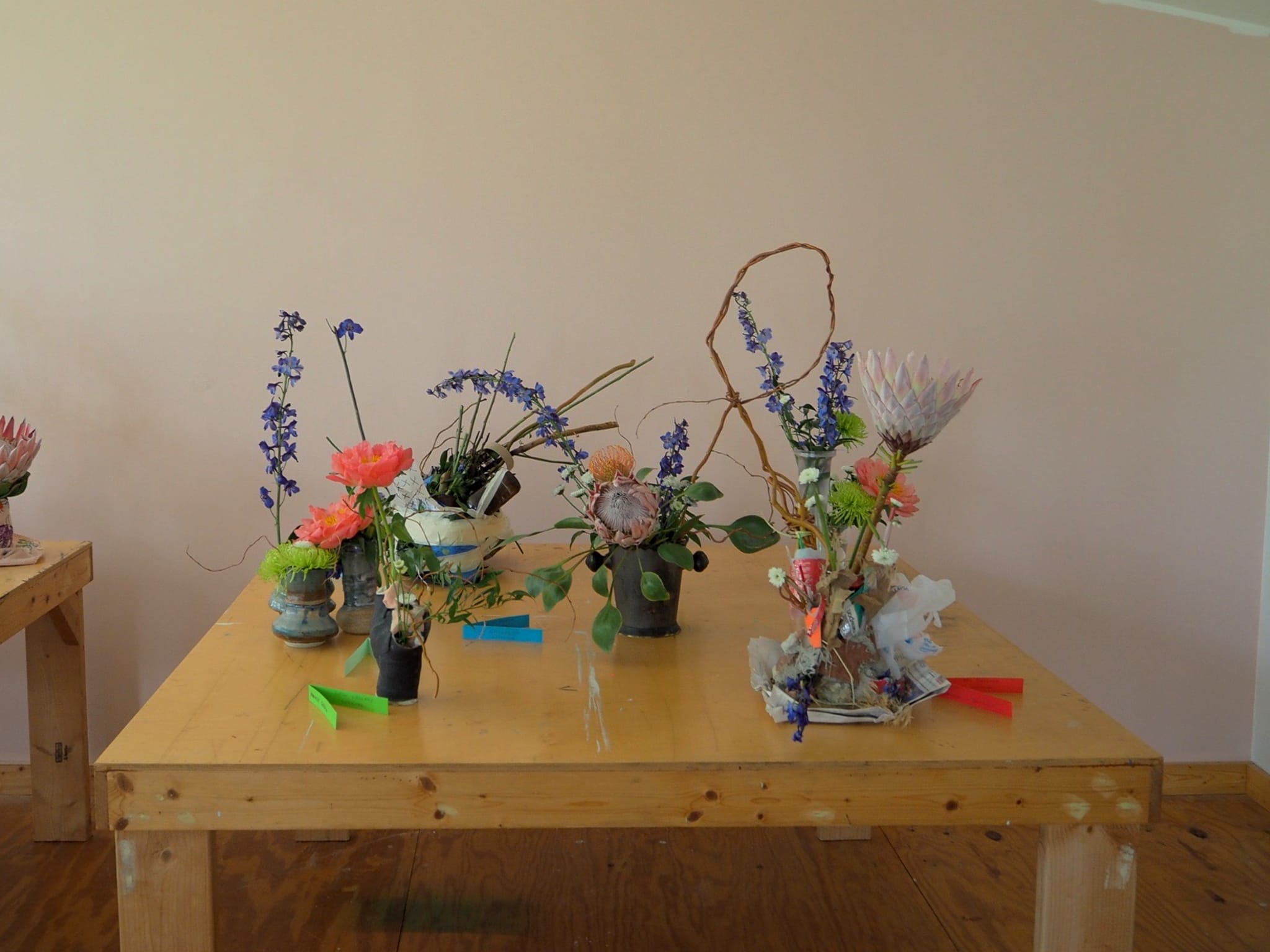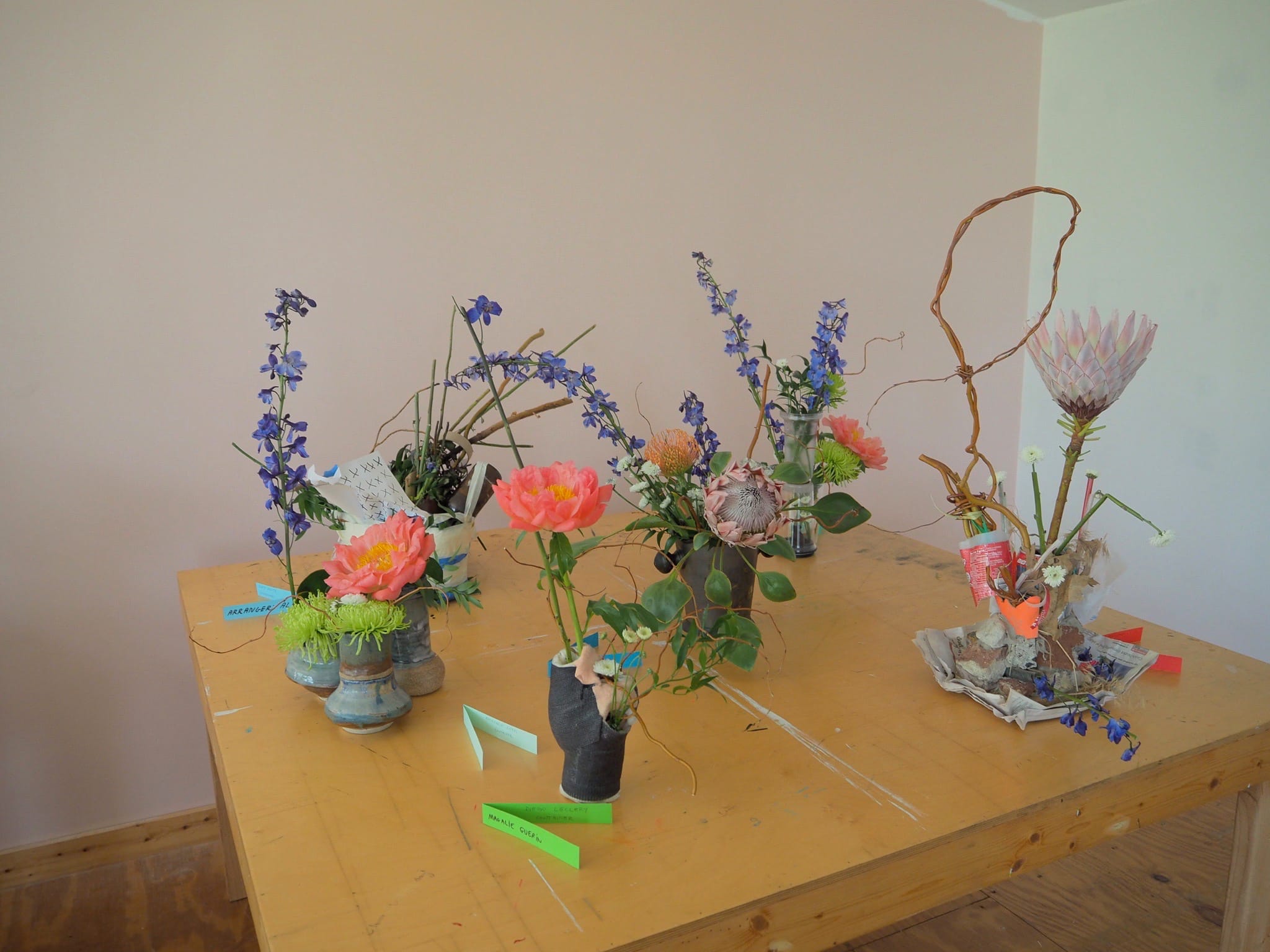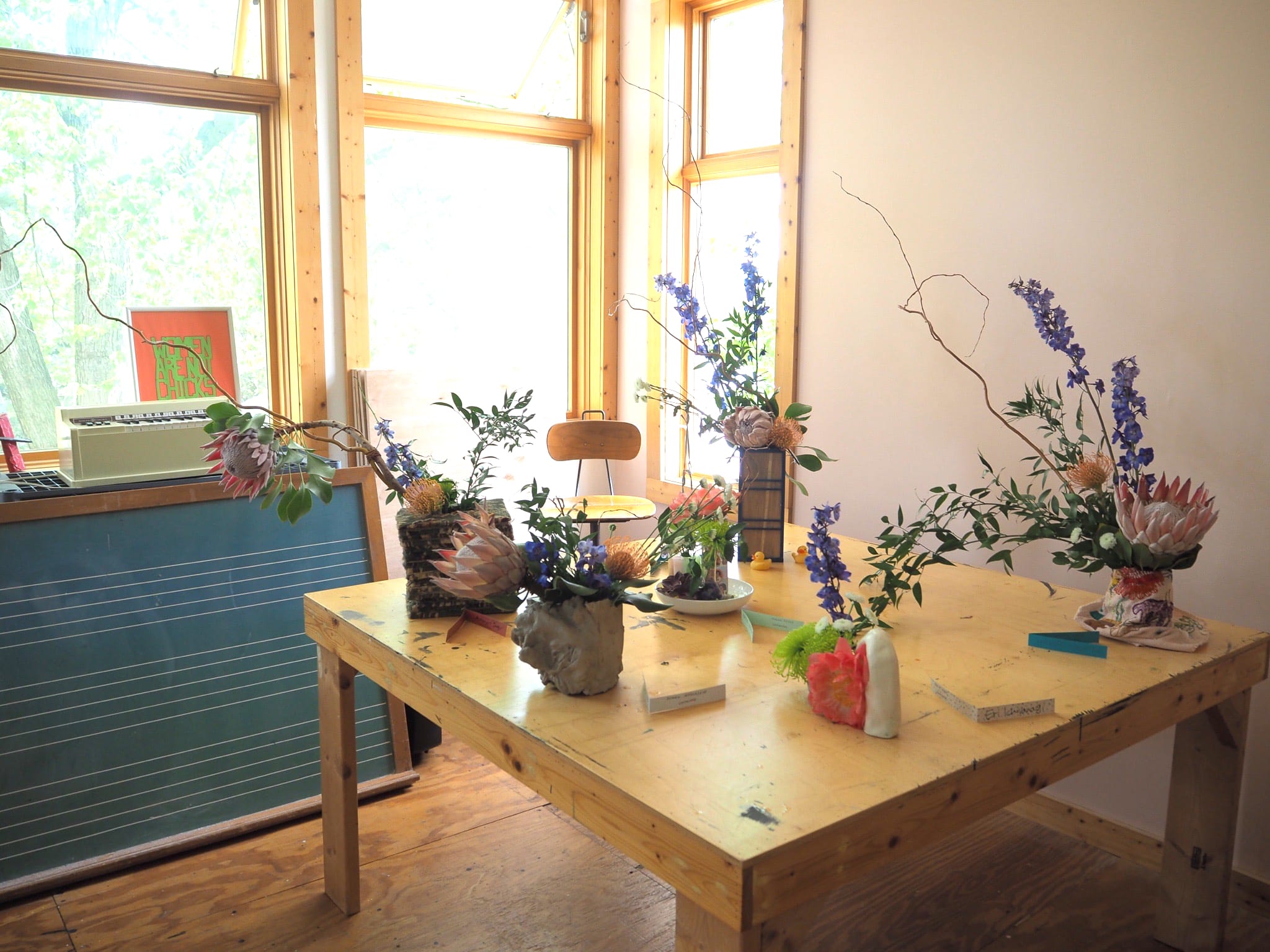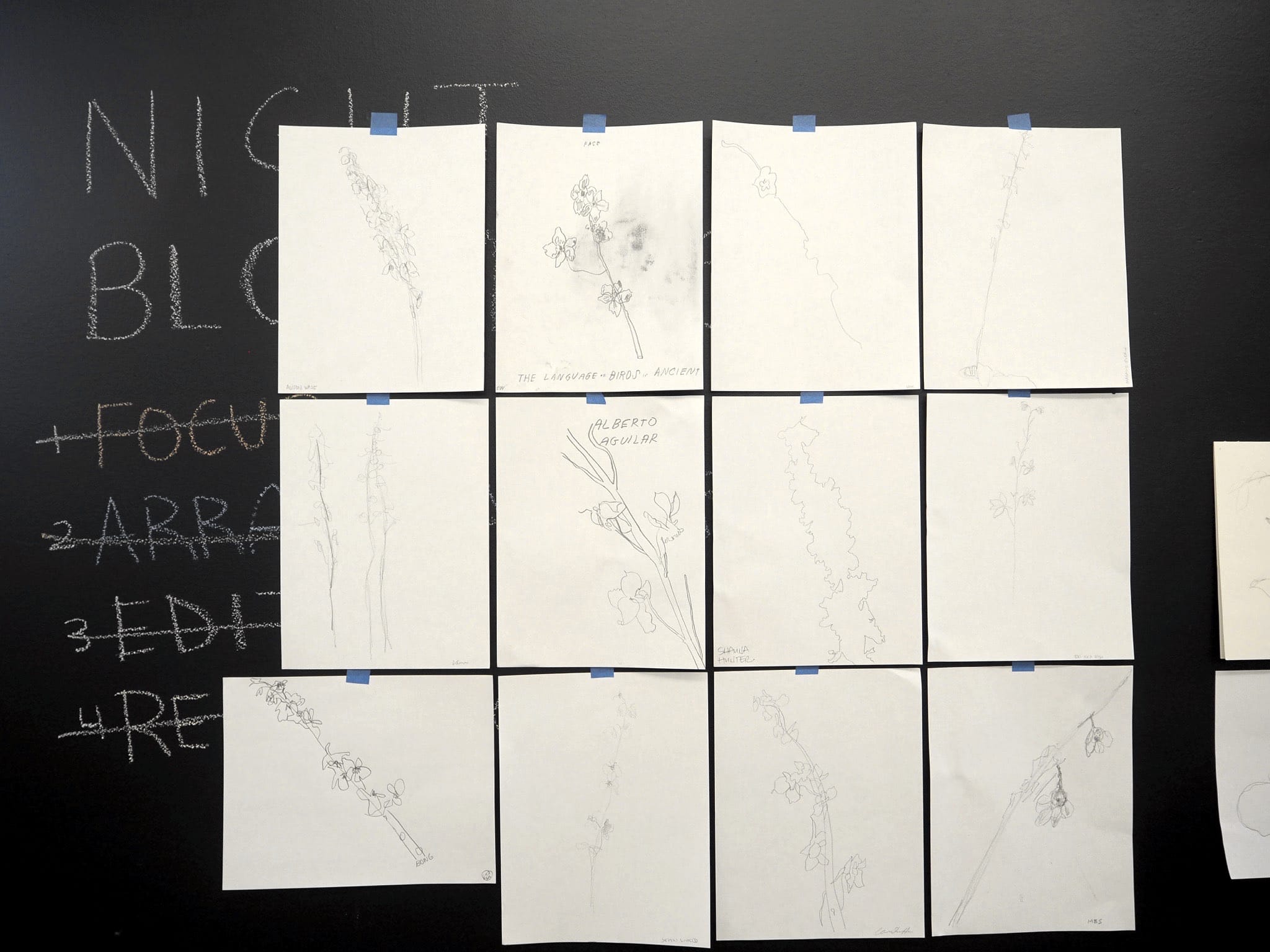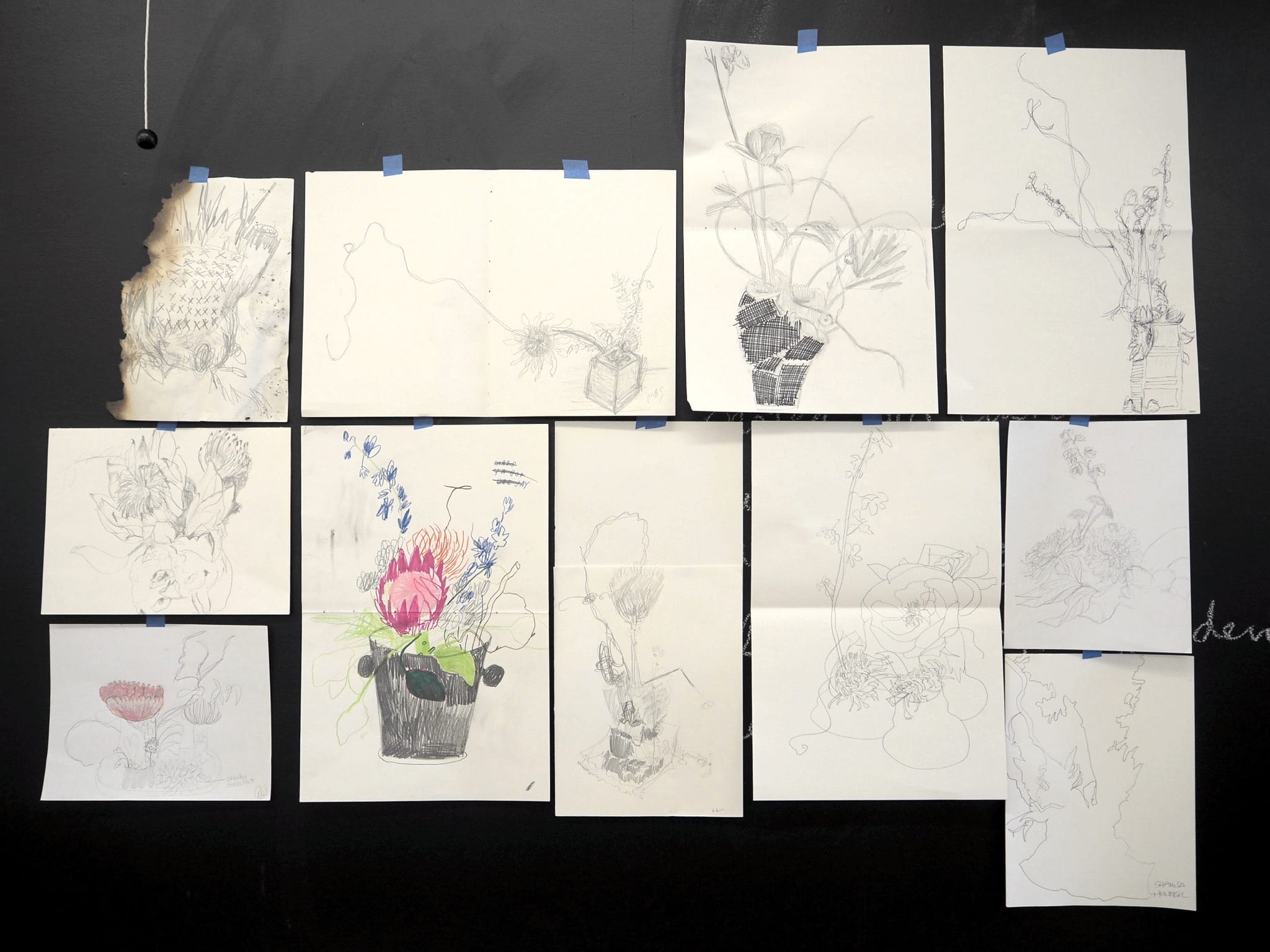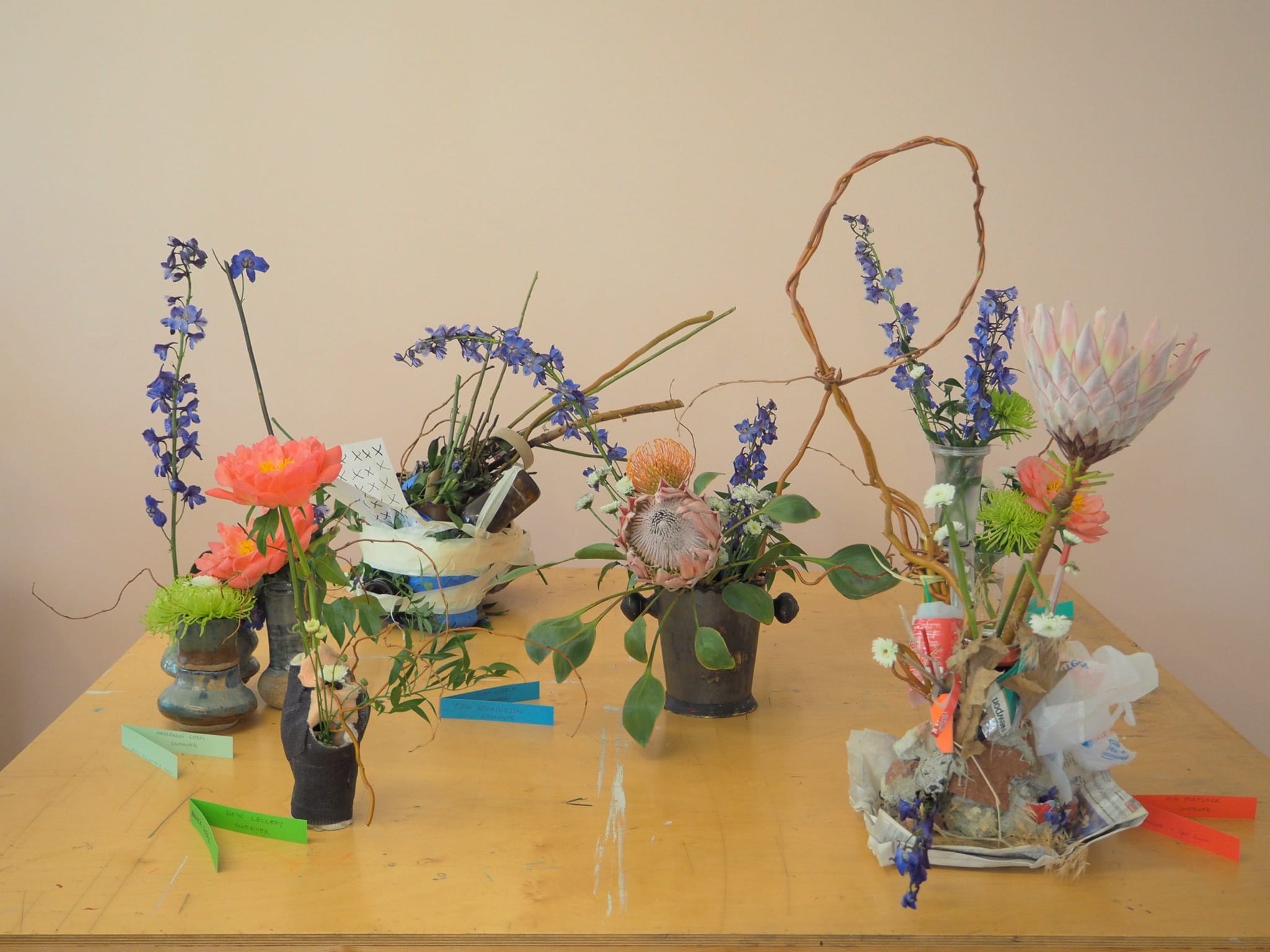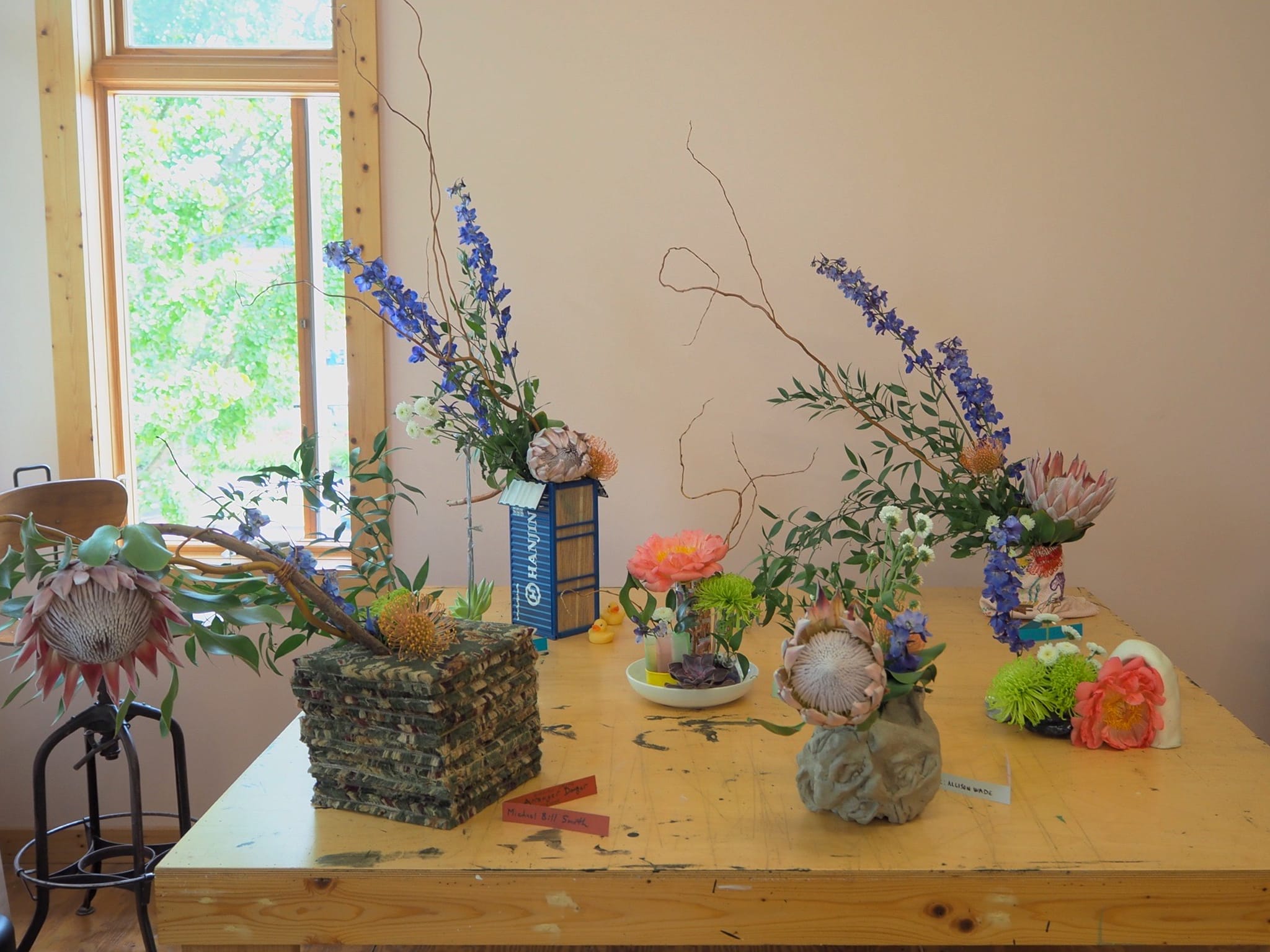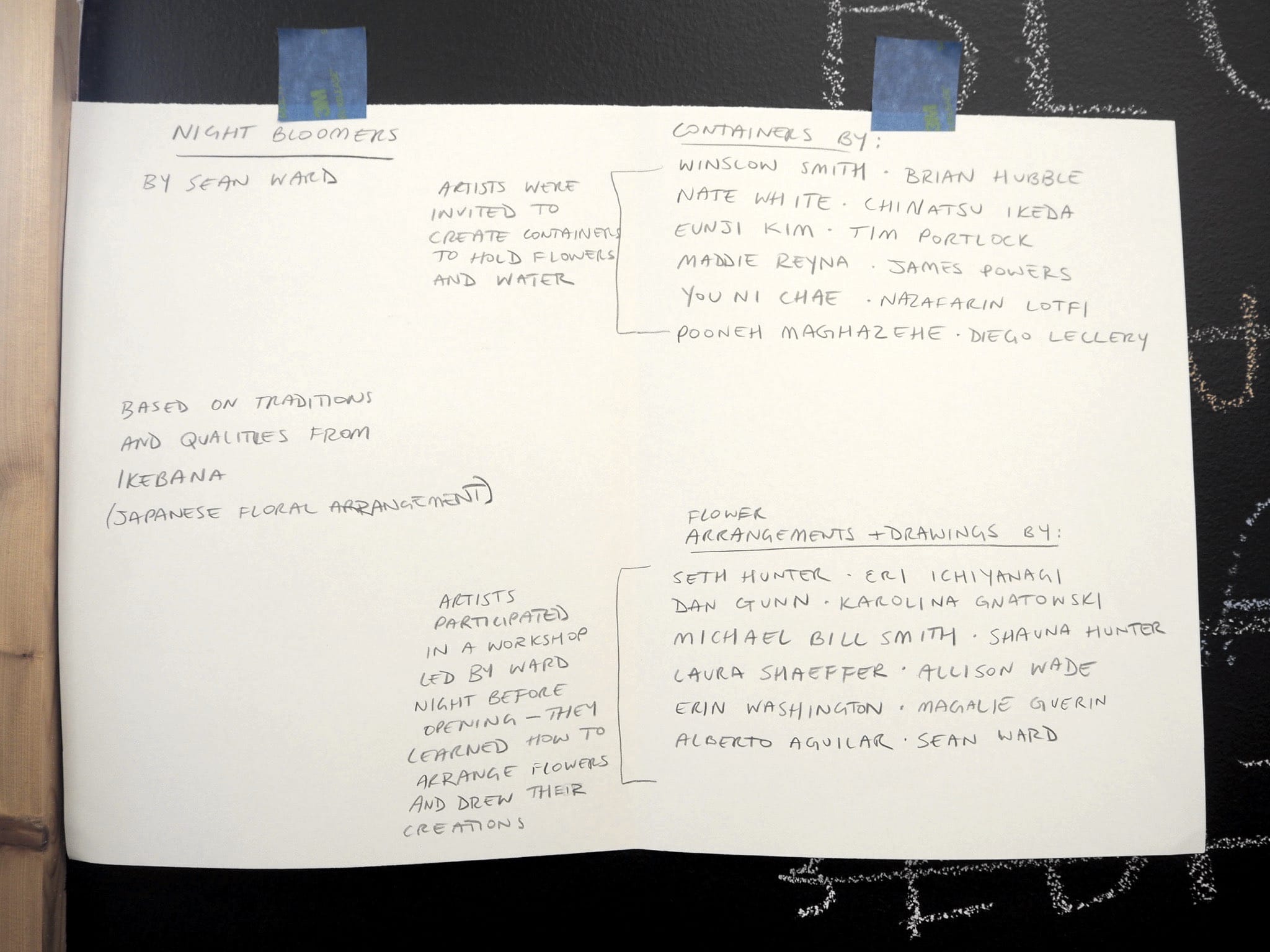Night Bloomers
Curated exhibition and workshop at Compound Yellow.
I remember my mother grabbing the dandelion from my sister’s mouth. Picking pretty things was her interest - wild flowers and flowering weeds her favorite.
- Sean Ward
Night Bloomers at Compound Yellow will be the second iteration of Finger Flowers, a project developed by Sean Ward. Fastnet in Brooklyn, New York hosted the premiere entitled Container-Container where Ward’s Sensei Yoshie Takahashi, her students, and her husband, ceramicist Marc Isaacs, collaborated on an exhibition of Ikebana arrangements in a shipping container on the Red Hook docks.
At Compound Yellow, a group of artists abroad were asked to create containers for artists residing in the vicinity of the Compound to use during an Ikebana workshop led by Ward. The workshop is held the night before the opening and the arrangements are placed throughout the Compound. Flowers will be renewed throughout the year by other exhibitors.
Finger Flowers is an experimental project and a question about adopted ancient arts in contemporary culture, Buddhism in Transcendentalism’s legacy, and an east to west movement rather than a westernization. The completed objects, container and flowers, being singular and ephemeral allows for meditation around economy, preservation, and spirituality.
Hand out heads, I rebuked on a platter sniffling drowsy fat/ I have enough cash to get damp, silver later/ While snipping orchids Saturday
- Moribana poem 2016-01-12, Sean Ward
(Moribana poem, invented form based on 167 characters or less divided across three main lines. Shin, soe and tai the three main parts structuring a Moribana flower arrangement which goes from longest, strongest plant material to the shortest.)
Container-makers,
Winslow Smith, Brian Hubble, Nate White, Chinatsu Ikeda, Eunji Kim, Tim Portlock, Maddie Reyna, James Powers, You Ni Chae, Nazafarin Lotfi, Pooneh Maghazehe, Diego Leclery
Arrangers,
Participated in a workshop on the evening of June 3rd - they learned about Ikebana’s history, basic principles and qualities, and reflected on their finished flower arrangements through drawing (Names are in order to reflect their use of their chosen container matching Container-maker’s name above):
Michael Bill Smith, Erin Washington, Alberto Aguilar, Shauna Hunter, Sean Ward, Dan Gunn, Karolina Gnatowski, Seth Hunter, Eri Ichiyanagi, Laura Shaeffer, Allison Wade, Magalie Guerin
Flowers sourced by Bob Shaeffer from AJF Wholesale,
- Curly Willow PeCurly Willow
- Peony
- Novelty Pomps
- Protea Pin Cushion
- Ruscus
- Protea King
- Delphinium Volkerfrieden
- Delistar
About Ikebana,
The Japanese Discipline of the Art of arranging flowers traces its origin to the 15th century when it began to coalesce into schools. Ikenobo is the oldest school with 550 years of unbroken tradition. Its spiritual base comes from the Senno Kuden or oral tradition. The spiritual link stands firm in the Rokakudo which is a temple on the grounds of its headquarters to this day.
The Ikebana practitioner seeks to quietly share in the universal life force during the creation of an arrangement. The brief interaction with live materials is both a meditation and an art which must happen precisely and in one sitting. The beauty of each season is expressed through a vast knowledge of techniques and a firm understanding of a plant’s place in nature. While many westerners look to the flower in full bloom as an ideal, the Ikebana practitioner sees this as the end of life. Buds, branches, and leaves just beginning to peak out from their origins are sought after as they express the wheel of life.
